Take me to the Recipes
Forget stereotypical leprechaun traps and green-dyed rivers – true Irish treasures await in steaming bowls of hearty stews and melt-in-your-mouth soda bread. Ireland’s cuisine is a captivating tale woven from rugged landscapes, rich history, and resilient spirit. Buckle up for a delectable journey as we explore the island’s unique flavors, where each bite whispers stories of past struggles, vibrant traditions, and an unwavering love for the land.
Imagine misty mountains nourishing succulent lamb, wild Atlantic waves delivering an abundance of fresh seafood, and fertile fields bursting with potatoes, the unsung hero of Irish kitchens. We’ll delve into how history shaped iconic dishes like boxty pancakes, remnants of famine ingenuity, and how geography influenced regional specialties like Kerry lamb stew, born from the island’s rugged beauty.
Discover the surprising European influences that dance with local ingredients in creamy colcannon and the impact of temperate climate on the bounty of vegetables that grace Irish tables.
So, ditch the stereotypes and prepare to be surprised. This isn’t just about Guinness and potatoes; it’s about unveiling a vibrant culinary scene brimming with warmth, comfort, and an explosion of unexpected flavors. Get ready to embark on a delicious adventure – your taste buds will thank you!
Ready to experience the true taste of Ireland? Dive into our exploration of its remarkable cuisine!
Take me to the Recipes
Irish Cuisine – Key Takeaways:
- Discover the national dish of Ireland, a beloved symbol of warmth and hospitality.
- Explore the rich and hearty flavors of traditional Irish food.
- Gain insight into the origins of Irish cuisine and the unique traditions that have shaped it.
- Learn about authentic Irish recipes and the techniques used to create them.
- Embark on your own culinary adventure and discover the vibrant tastes of Ireland.
Where is Ireland?

Ireland is an island nation on the westernmost edge of Europe. The Republic of Ireland occupies 80 percent of this landmass, while a large chunk of land in the north is part of the United Kingdom.

Index to the Contents
- Take me to the Recipes
- More Articles
- 10 Quirky Bites of the Emerald Isle: Weird & Wonderful Facts About Ireland
- Ireland’s History and the Effect It Has Had on the Cuisine
- How Ireland’s Climate and Geography has Influenced Irish Cuisine
- Understanding the Essence of Irish Cuisine
- Irish Culinary Traditions
- From Garden Ornament to Irish Icon: The Rise and Fall (and Rise Again) of the Potato
- Exploring Ireland’s Ingredients: The Flavors of Irish Cuisine
- Irish Cuisine Traditional Dishes
- National Dish of Ireland
- Celebrating the Tastes of Ireland
- How Healthy is Irish Food?
- 10 Popular Irish Recipes
- Irish Recipes you can try in your own Kitchen
- Conclusion
- FAQ’s
You may also be interested in the following Articles
- North and South American Cuisine – A Culinary Expedition
- Europe Cuisine: Savor the Continent’s Best Culinary Secrets!
- African Cuisine: Discover the Bold Flavors & Global Charm!
- Asian Cuisine Unlock its Secrets – Taste, Health & Global Influence!
Savor iconic Irish Food Recipes – Click on each tantalizing picture to open up the Recipe.
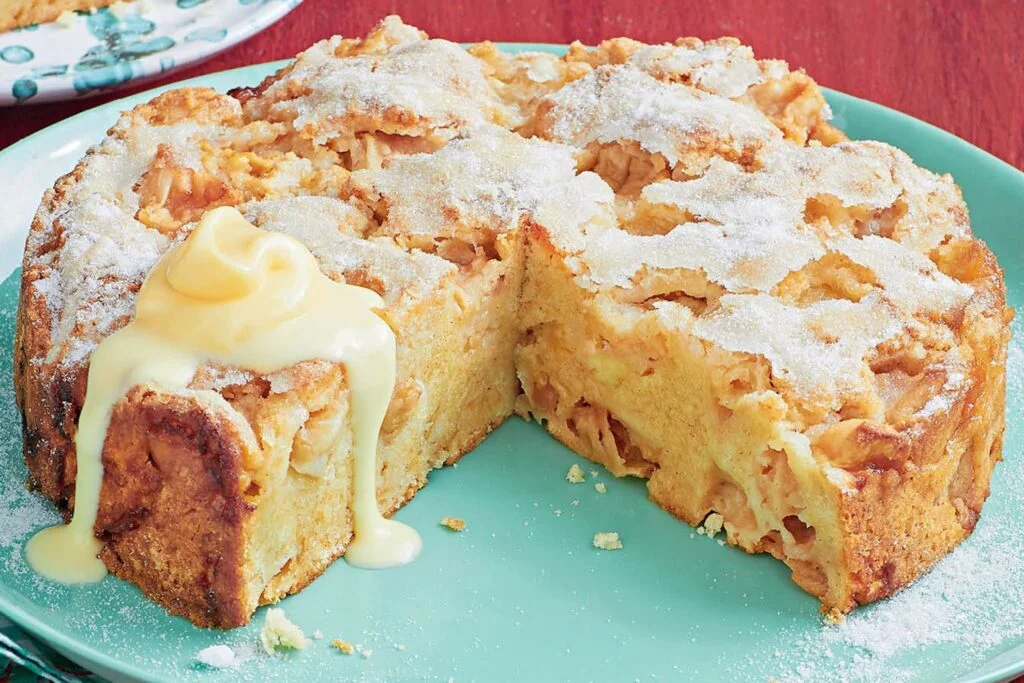
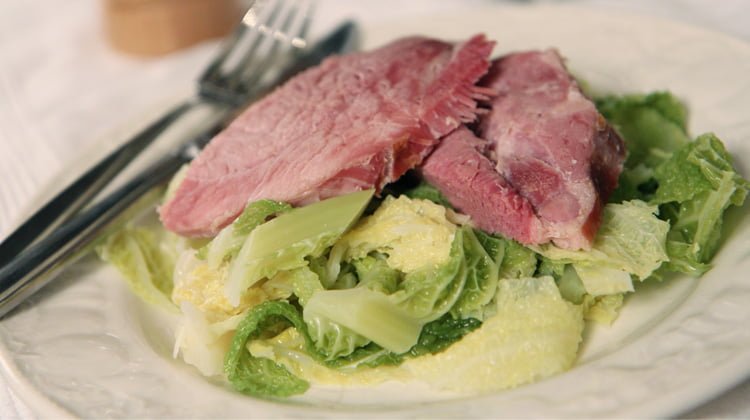
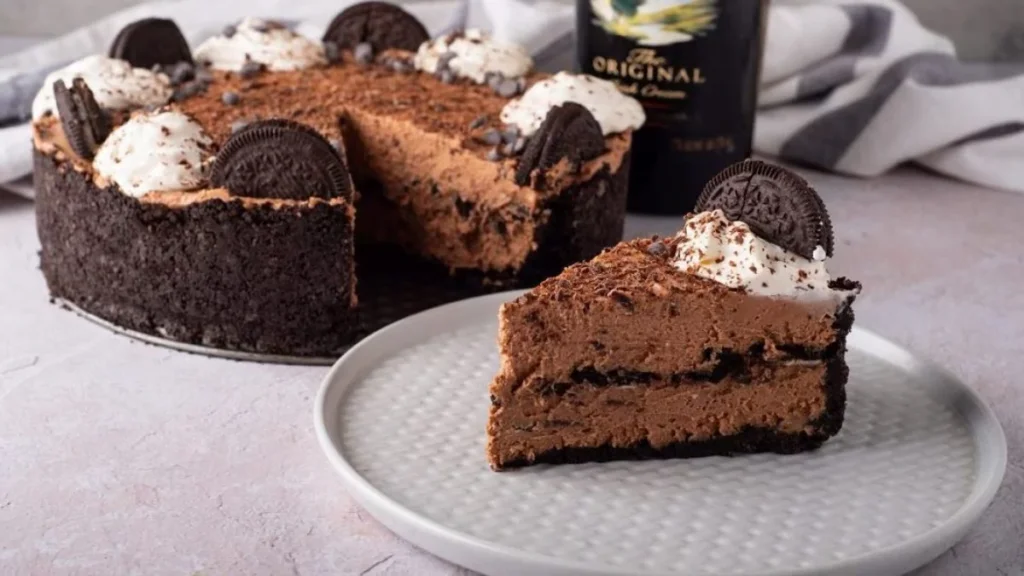
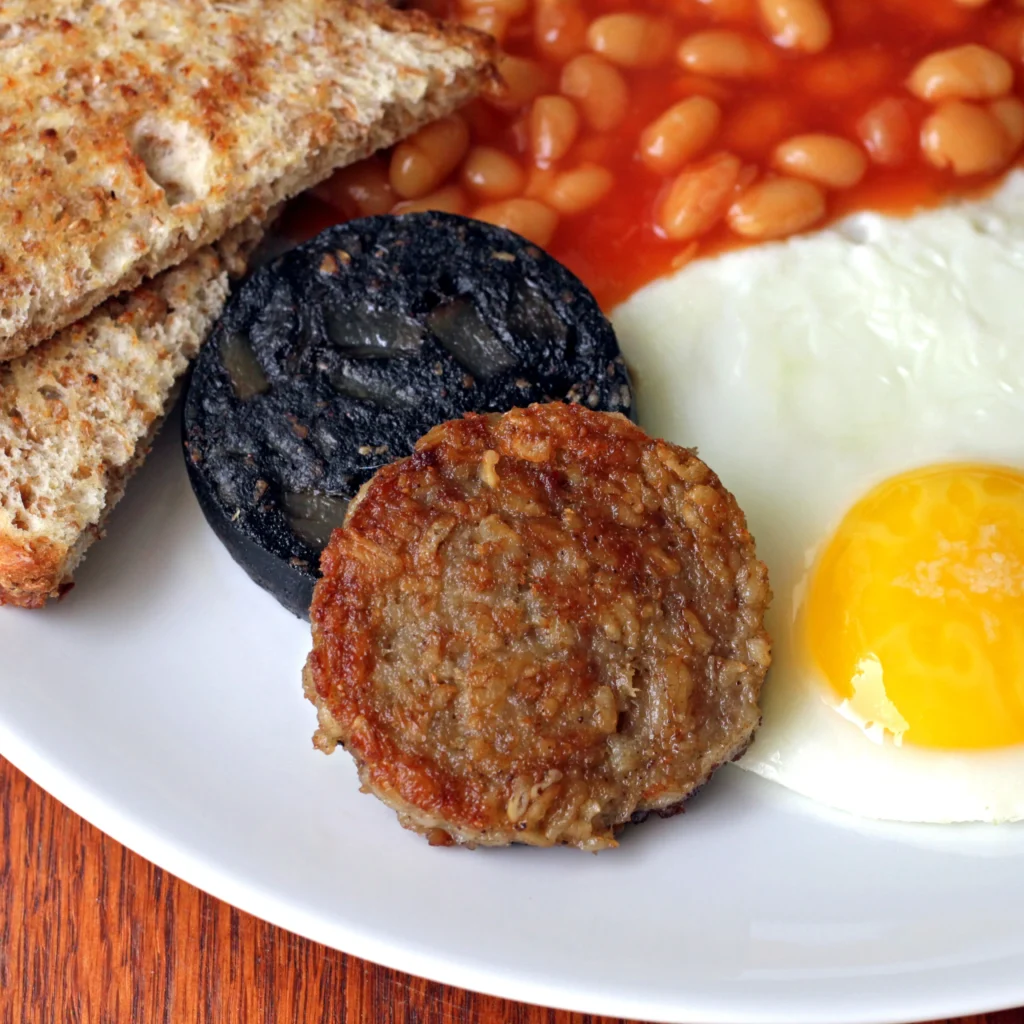
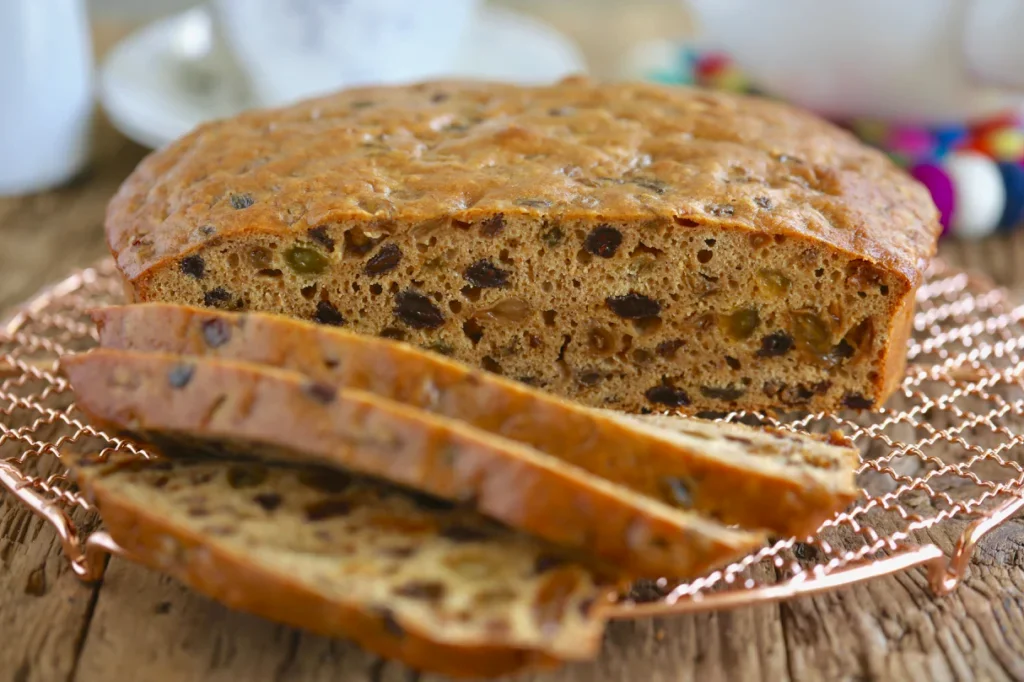
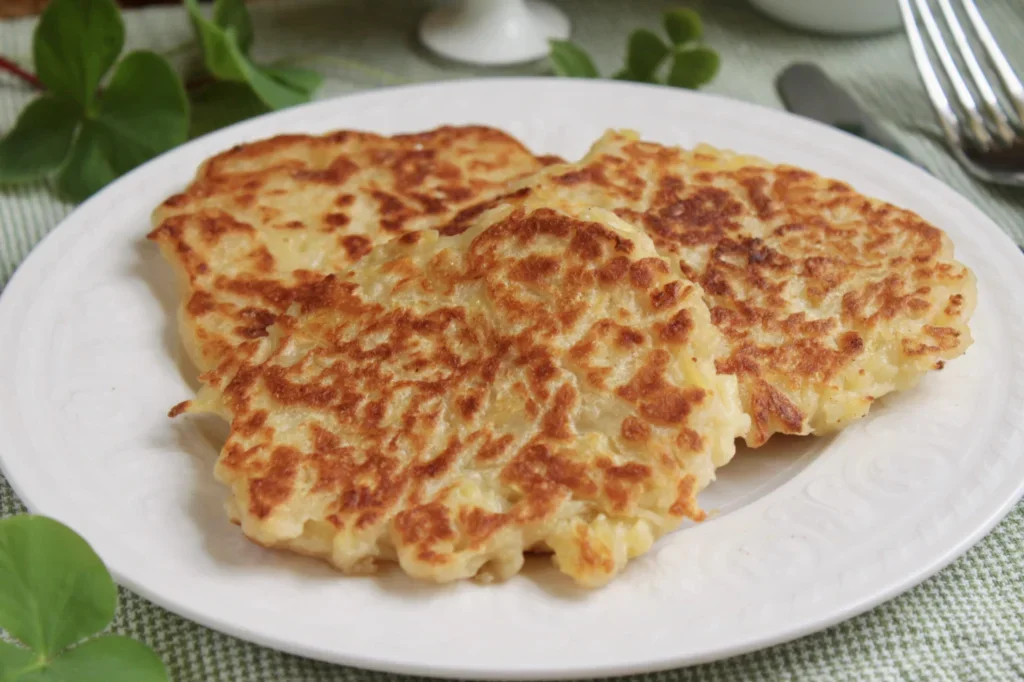
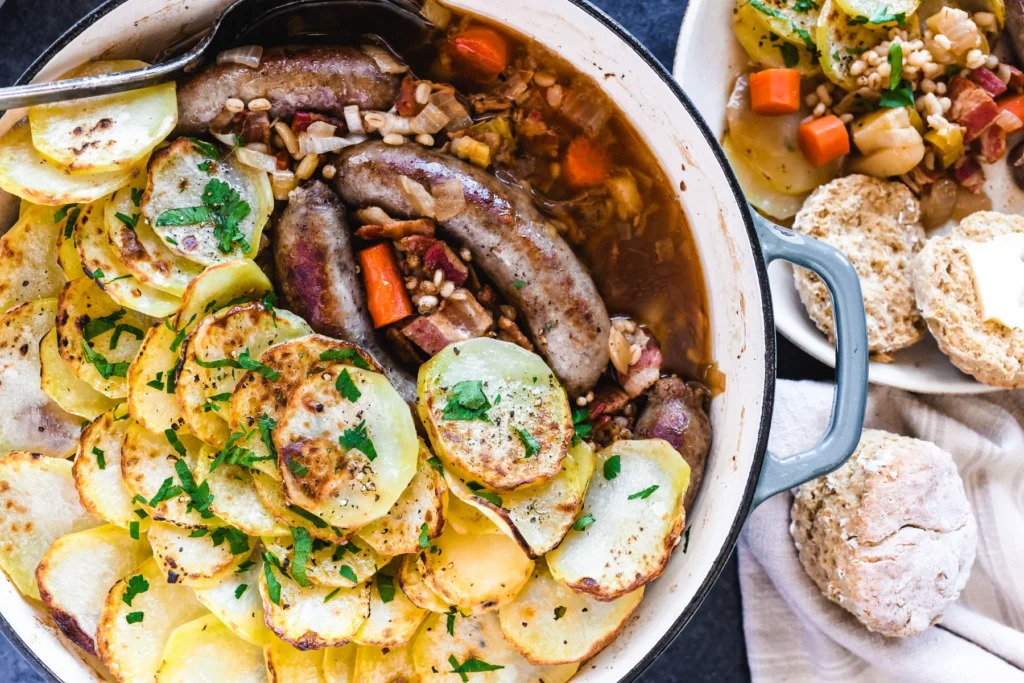
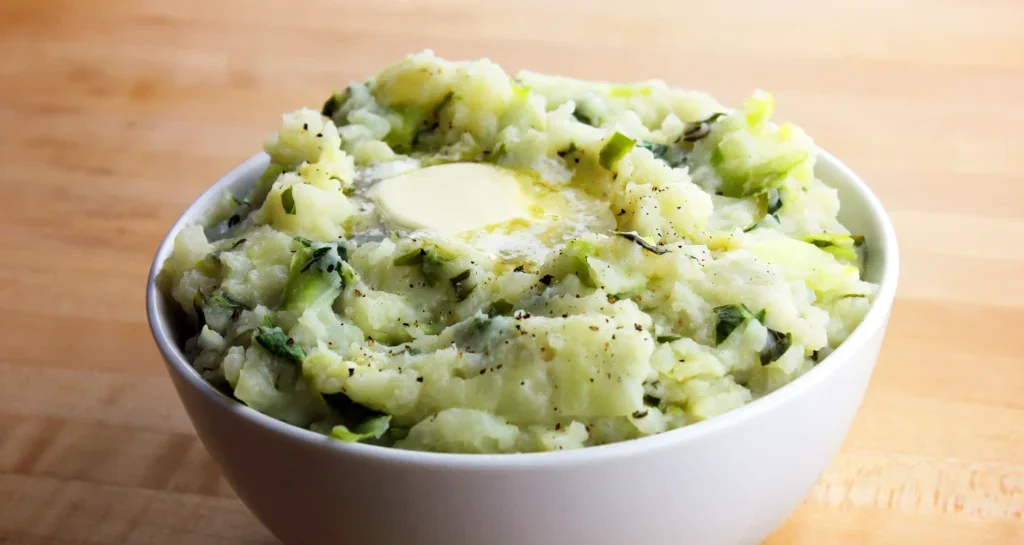
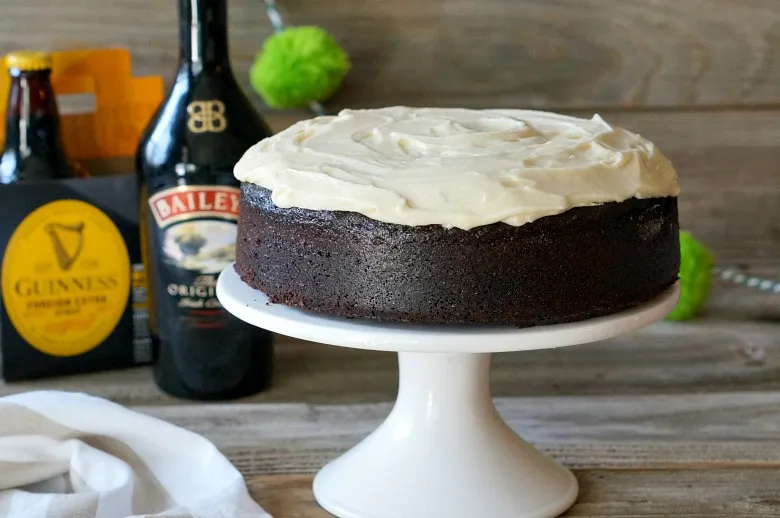
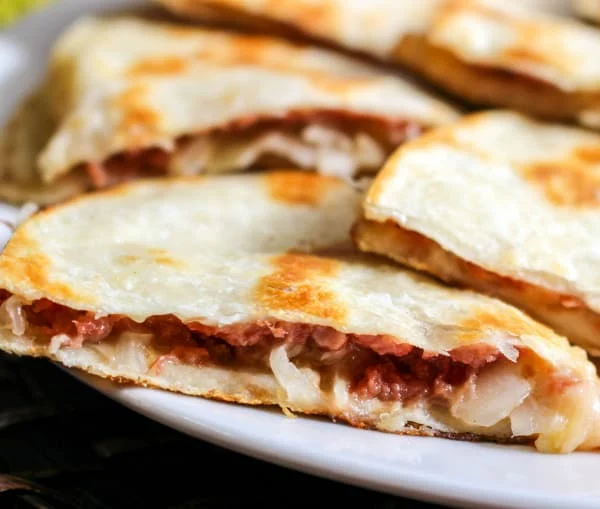

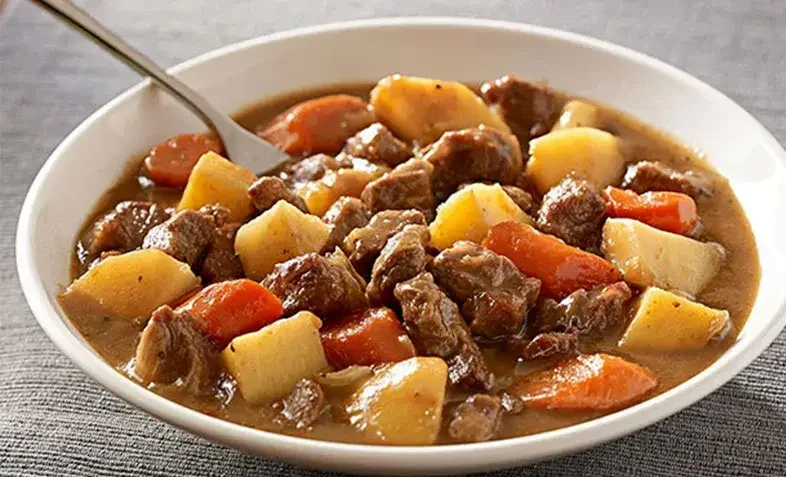
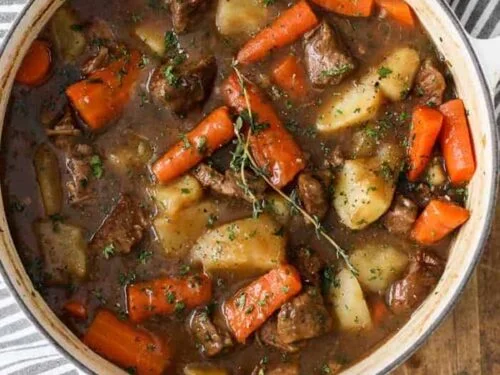
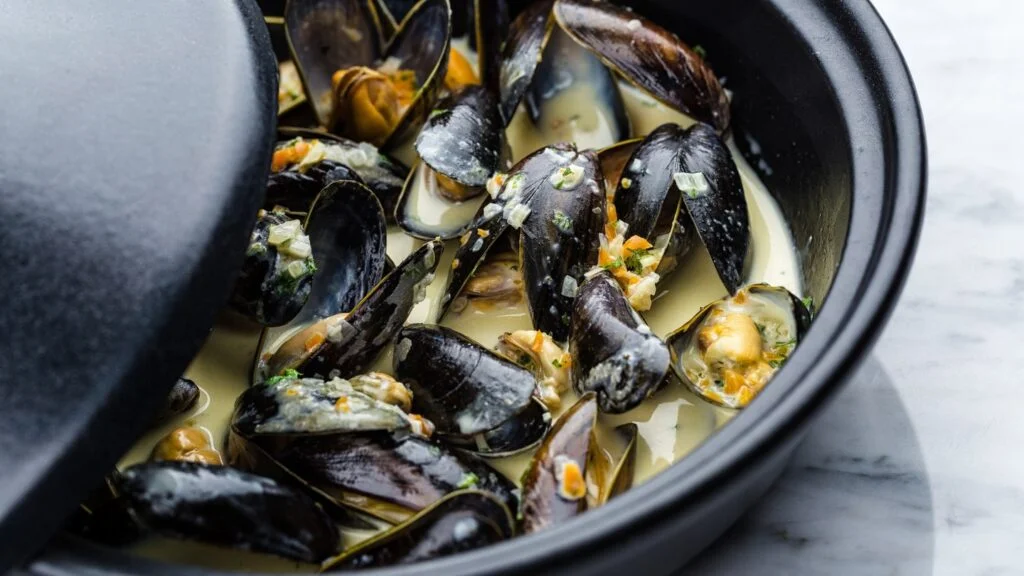

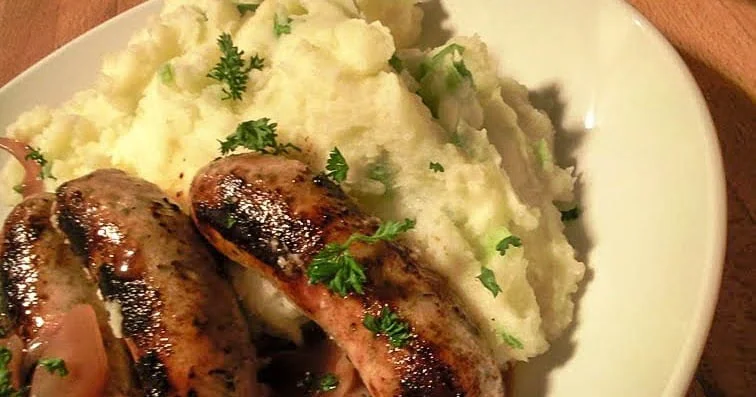
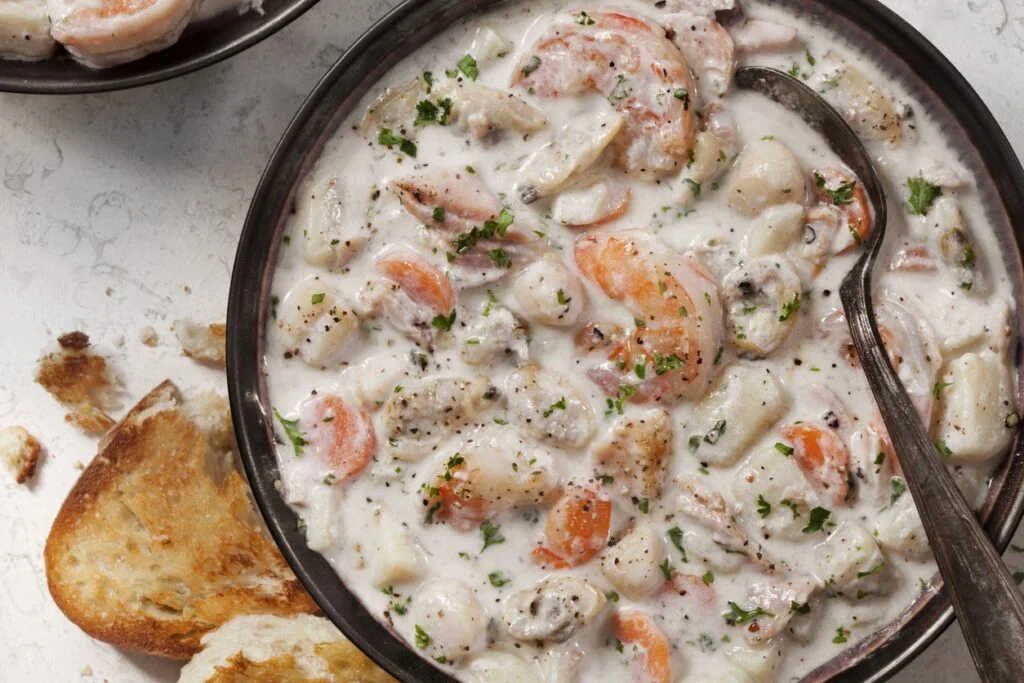
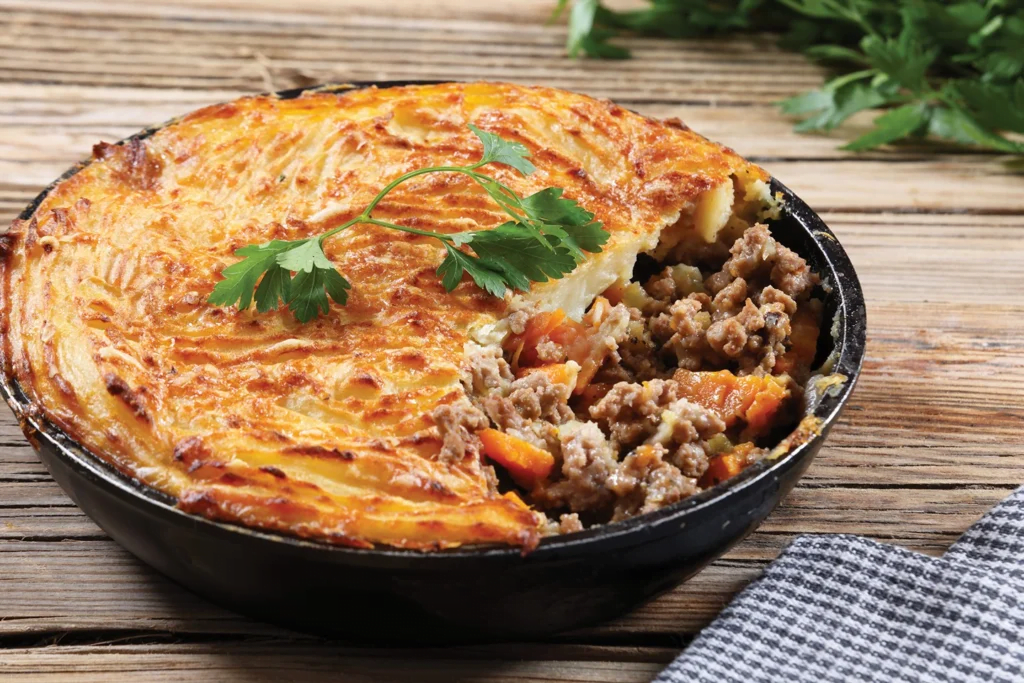
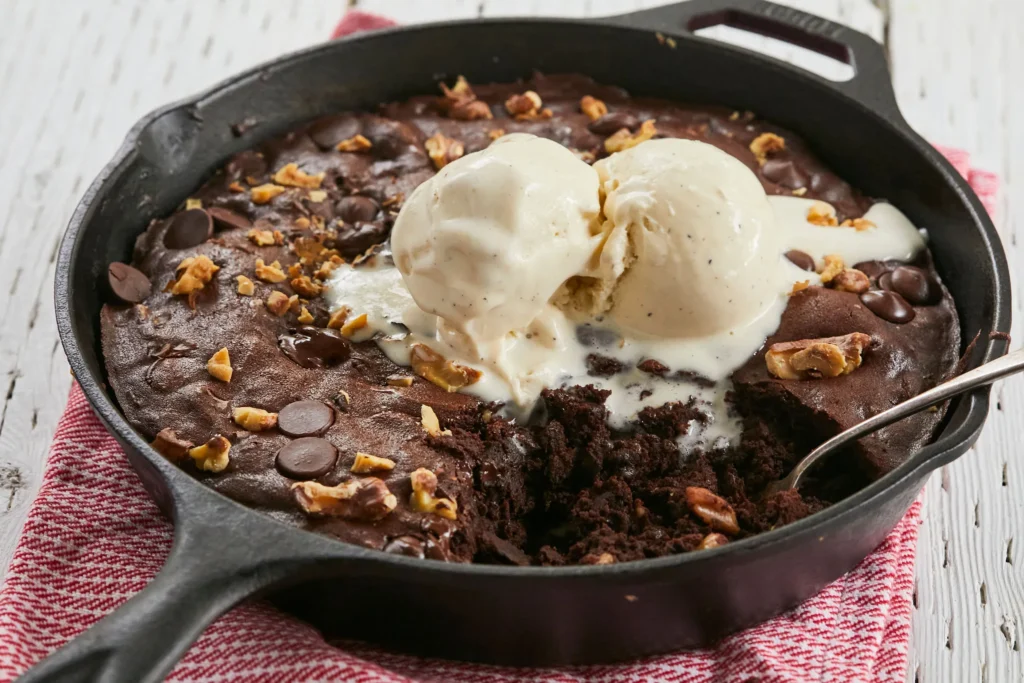
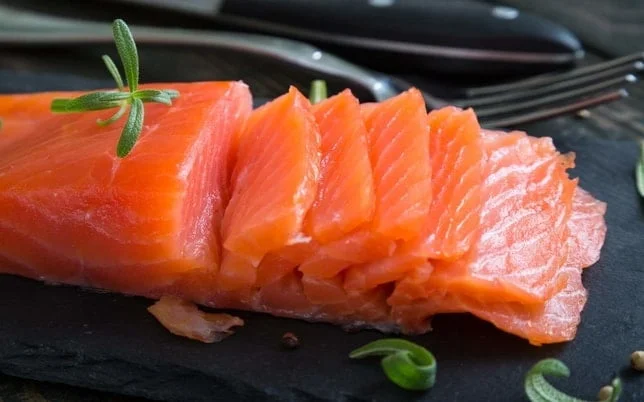
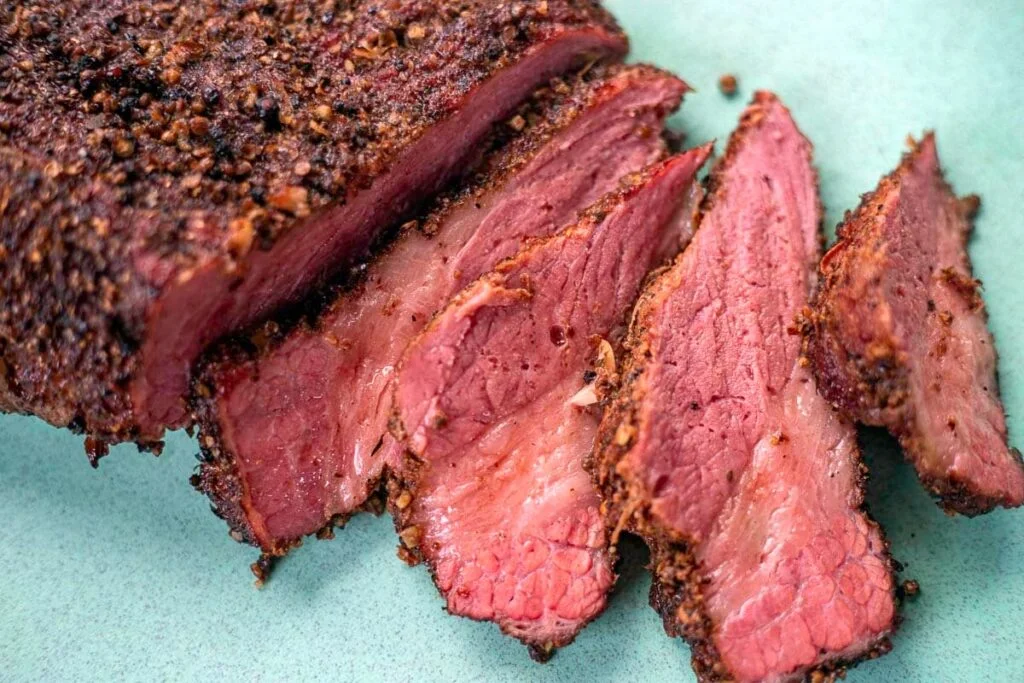
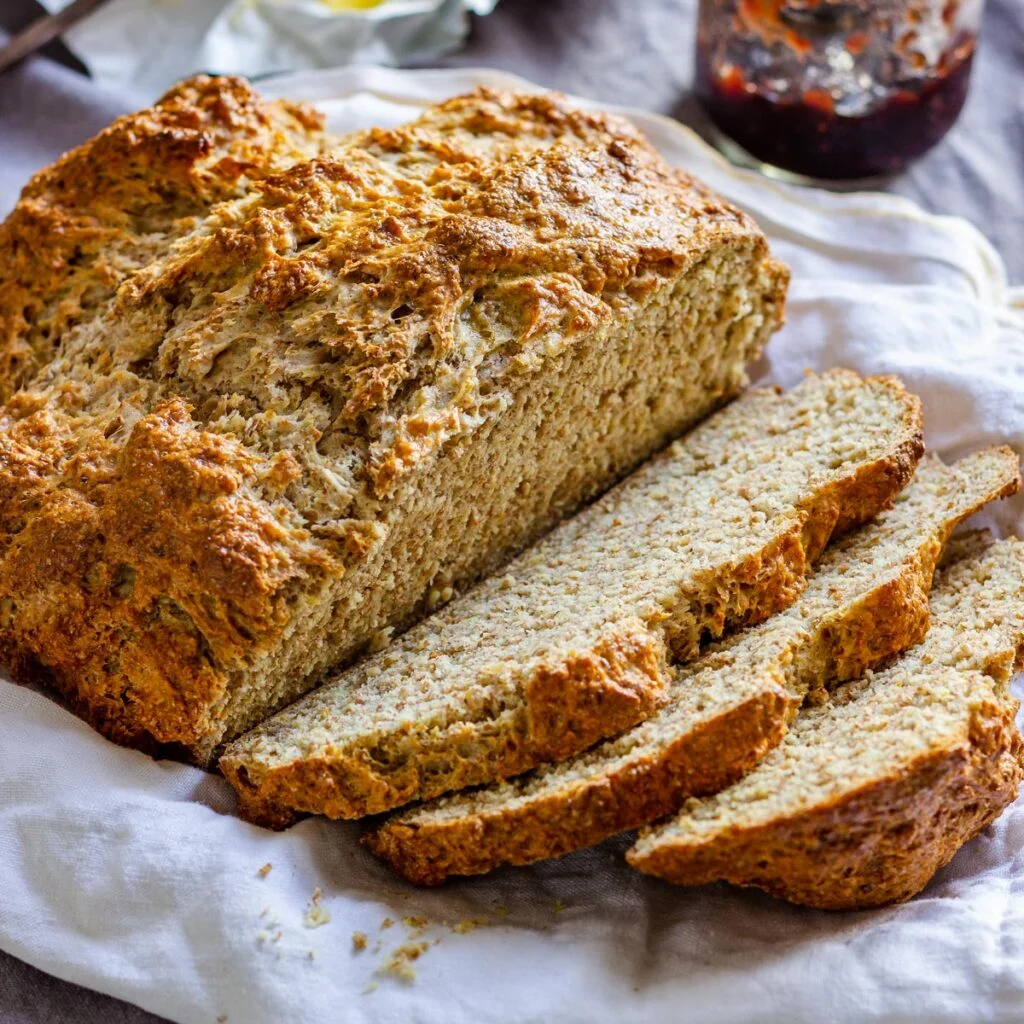
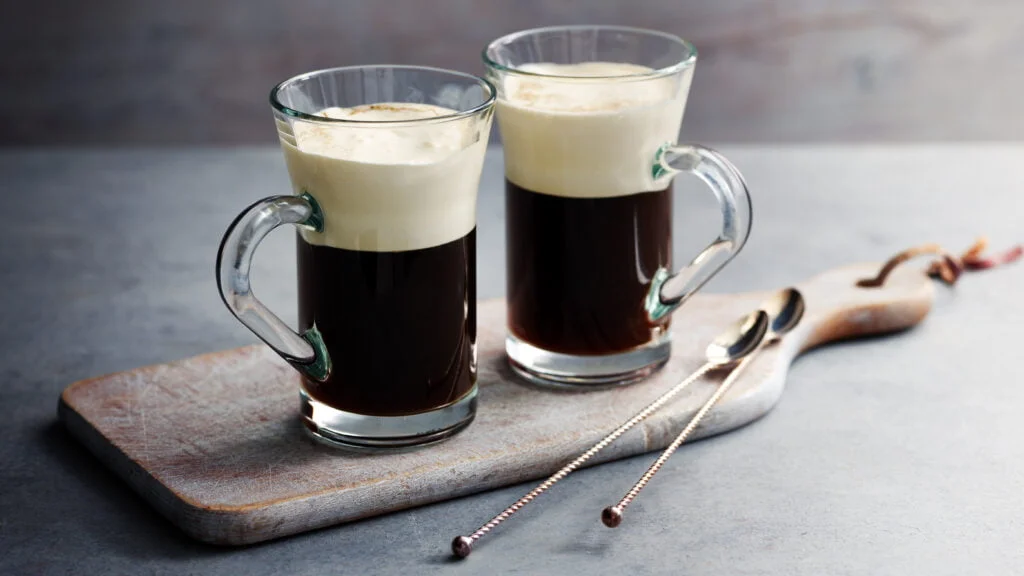
10 Quirky Bites of the Emerald Isle: Weird & Wonderful Facts About Ireland
Ireland, the land of rolling green hills, mystical stories, and friendly faces, also harbors a treasure trove of strange, funny, and downright fascinating facts. Buckle up, history buffs and trivia enthusiasts, as we delve into the lesser-known side of this captivating island:
Snakes? Never Heard of Them
Contrary to popular belief (thanks, St. Patrick!), there are no native snakes in Ireland. Legend has it the patron saint banished them all, but science suggests they never made it across the icy bridge during the last ice age.
The Longest Place Name in Europe

Prepare to break your tongue! “Muckanaghederdauhaulia” (yes, you read that right) is a townland in County Galway, holding the crown for the longest place name in Europe. Don’t worry, locals have shortened it to a more manageable “Muckanagheder.”
Halloween’s Spooky Roots
Contrary to popular belief, Halloween didn’t originate with trick-or-treating and costumes. It actually stems from the ancient Irish festival of Samhain, a time to honor the dead and mark the changing seasons. So, the next time you carve a pumpkin, remember its Celtic connection!
Kiss the Blarney Stone for the Gift of the Gab

Legend has it that kissing the Blarney Stone at Blarney Castle bestows the gift of eloquence. Thousands of tourists participate in this tradition each year, leaving the stone perpetually polished (and maybe a little germy!).
Guinness, Guinness Everywhere
This iconic stout isn’t just a national drink; it’s a cultural phenomenon. In fact, more Guinness is sold in Nigeria than in Ireland! But fear not, Irish pubs proudly pour this dark nectar, making it a must-try for any visitor.
The World’s Oldest Pub? Possibly!

Dublin’s Sean’s Bar claims the title of the oldest pub in the world, with evidence suggesting it was quenching thirsts as early as 900 AD. Imagine sipping a pint steeped in centuries of history!
A Harp, not a Shamrock
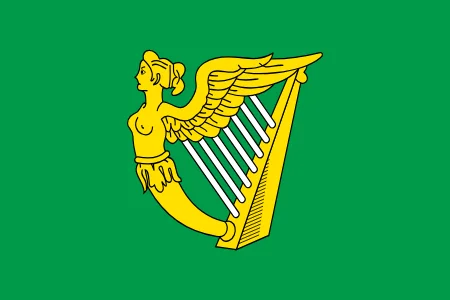
While the shamrock graces St. Patrick’s Day celebrations, the official symbol of Ireland is actually the harp. It can be found on passports, coins, and even the national airline, Aer Lingus.
Sheep Outnumber People (Way Outnumber)
Ireland’s sheep population clocks in at around 6.6 million, while the human population sits at a cozy 5 million. So, next time you’re exploring the countryside, prepare to encounter more woolly friends than fellow humans!
A Town Built by One Man

Dursey Island, off the coast of County Cork, boasts a unique claim to fame – it was once home to just one resident, Michael McCarthy. He ran the island’s pub, post office, and farm, making him a true one-man show!
Home to the “Mother” of All Pub Quizzes
Every year, thousands of pubs across Ireland participate in the “All Ireland Pub Quiz,” a nationwide trivia extravaganza with questions ranging from history to pop culture. So, if you’re feeling brainy, test your knowledge alongside the locals!
Ireland’s charm goes beyond breathtaking landscapes and friendly smiles. These quirky facts offer a glimpse into its unique character, where history, humor, and the occasional oddity intertwine.
So, the next time you raise a glass or explore a quaint village, remember – there’s more to the Emerald Isle than meets the eye!
Ireland’s History and the Effect It Has Had on the Cuisine
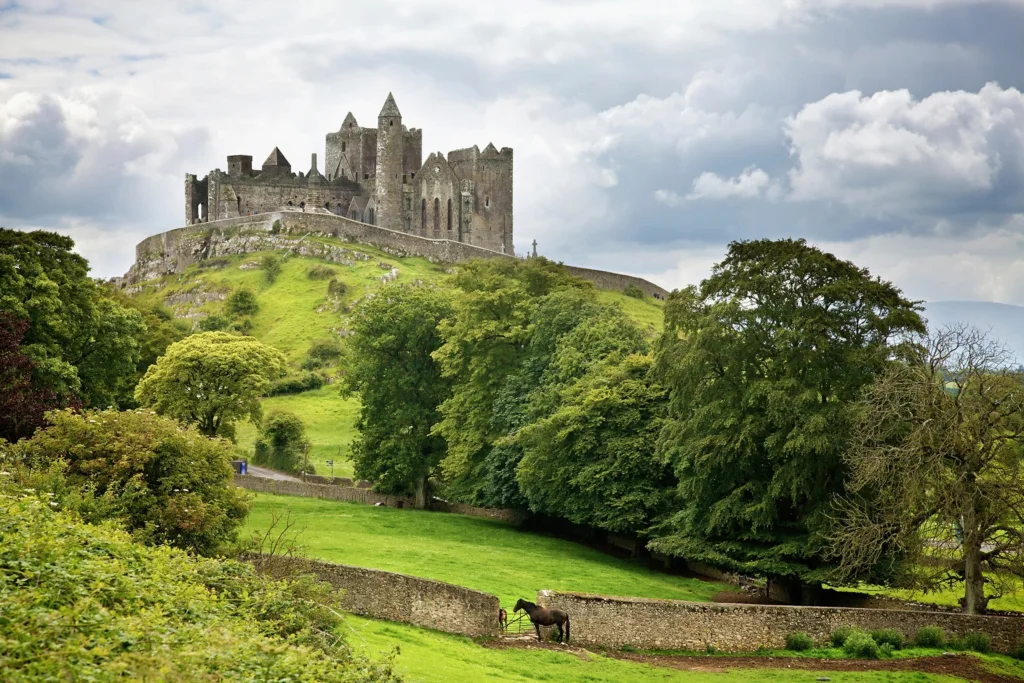
Get ready to embark on a delicious adventure through time, exploring how each era has shaped the unique flavors of the Emerald Isle:
Prehistoric Feasting (8000 BC – 400 years ago)
Imagine diving into a prehistoric pantry filled with plump oysters, mussels, and wild berries. These early hunter-gatherers navigated Ireland’s coastline and rivers, forging a connection with the land that resonates in Irish food even today.
Mythological Munchies
Irish folklore whispers tales of ancient feasts, like Queen Maeve’s legendary cattle drives highlighting the deep-rooted significance of livestock. Prepare to be transported to a time when heroes were judged by their herds, offering a window into the early Irish diet.
Monastic Bounty (5th – 16th centuries)

Christianity’s arrival brought monasteries, which became havens for preserving culinary knowledge. Imagine fragrant herb gardens thriving within their walls, contributing to a flourishing food culture. Dairy products like butter and cheese became staples, enriching the Irish palate.
Norman Spice & Conquest (12th – 17th centuries)
The Normans arrived with a treasure trove of spices, herbs, and exotic fruits, adding a new dimension to Irish cuisine. However, English colonization brought a shift towards large estates and a reliance on potatoes, oats, and dairy.
The Potato’s Paradox (1845 – 1852)
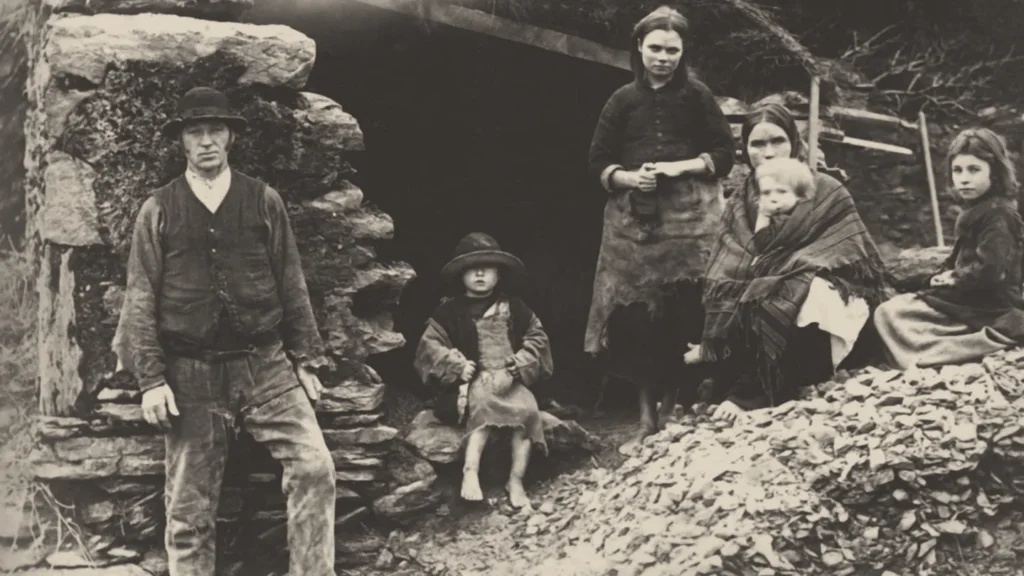
The Great Famine stands as a tragic chapter in Irish history, showcasing the dangers of monoculture. The overreliance on potatoes led to immense suffering, reshaping the Irish diet and leaving an indelible mark on its culinary landscape.
Revival & Renaissance (19th – 20th centuries)
The Irish Literary Revival celebrated cultural heritage, including its food. Traditional recipes were unearthed, preserving precious culinary gems. Today, modern Irish cuisine proudly carries this torch, blending tradition with global influences.
21st Century Flavor Revolution

Irish cuisine is experiencing a renaissance! Local, seasonal ingredients are celebrated by chefs and producers, showcasing the island’s bounty. Classic dishes like colcannon, boxty, and seafood chowder are cherished alongside innovative creations.
The Final Course
Ireland’s culinary journey is a testament to its history, resilience, and love for the land. Each era has left its mark, creating a captivating blend of tradition and innovation. So, the next time you savor an Irish dish, remember – you’re not just enjoying a meal; you’re experiencing a taste of history.
References
How Ireland’s Climate and Geography has Influenced Irish Cuisine

Imagine an island bathed in gentle breezes, kissed by the Atlantic, and bursting with fresh produce. This is Ireland, a land where climate, geography, and history have woven a tapestry of delicious flavors.
Buckle up for a culinary adventure as we explore the unique forces that shaped Irish cuisine, from hearty stews to fluffy soda bread.
Mild Seas, Bountiful Feasts
Ireland’s temperate climate, courtesy of the Atlantic Gulf Stream, isn’t about extremes. Think mild summers, cool winters, and gentle rains nourishing lush green fields. It’s no wonder the surrounding waters teem with seafood, fueling iconic dishes like creamy chowders.
Dive into a steaming bowl and savor the taste of the ocean’s bounty!
Rooted in the Land
Irish cuisine is firmly grounded in the fertile soil of the island. Think fields bursting with potatoes, a 16th-century arrival that became a beloved staple, thanks to its affordability and adaptability.
Alongside the humble spud, imagine fields of cabbage, oats, barley, and herds of dairy cows providing milk, butter, and cheese – the foundations of many classic dishes.
Winds of Change, Spices of History
History played its part too. The Tudor conquest brought changes, with large swathes of land dedicated to grain production. While beef and other meats went abroad, potatoes became even more crucial for the Irish people.
This fascinating interplay of history and food left its mark on the island’s culinary landscape.
Revival & the Modern Twist
Today, Irish cuisine is experiencing a renaissance. Traditional dishes like hearty stews, bacon and cabbage, fluffy soda bread, boxty pancakes, and creamy colcannon are cherished alongside innovative creations.
Irish chefs are masterfully blending tradition with global influences, creating a dynamic and exciting food scene.
So, the next time you savor an Irish dish, remember you’re not just enjoying a meal, you’re experiencing a land’s unique story, woven with love for fresh ingredients, a touch of history, and a whole lot of heart.
References
- worldtravelguide.net
- en.wikipedia.org
- greatbritishchefs.com
- insightguides.com
- thedailymeal.com
- britannica.com
- irishhistory.com
Understanding the Essence of Irish Cuisine

Irish cuisine often conjures images of hearty stews, fluffy soda bread, and perhaps a pint of Guinness. But its essence extends far beyond these iconic dishes. Dive deeper, and you’ll discover a rich tapestry woven with fresh, seasonal ingredients, historical influences, and a deep love for the land.
Here’s what truly makes Irish food special:
A Deep Connection to the Land
From the emerald pastures to the wild Atlantic coast, Ireland’s geography dictates its ingredients. Fresh-caught seafood, plump lamb raised on rolling hills, and hardy vegetables nurtured by temperate rains form the foundation of many dishes.
This connection to the land shines through in the simplicity and quality of ingredients, ensuring each bite bursts with flavor.
A Legacy of Resilience
Irish history is marked by struggles, including the devastating potato famine. This shaped the cuisine, emphasizing dishes that are hearty, filling, and made with readily available ingredients.
Stews, boxty pancakes, and colcannon are testaments to this resilience, showcasing a resourcefulness that turned limitations into culinary creativity.
A Fusion of Influences
From Norman spices to Tudor farming practices, Ireland’s past has left its mark on its food. Dishes like spiced sausages and black pudding whisper of Norman influence, while the focus on grains like barley reflects Tudor-era changes.
Today, modern chefs blend these traditions with global influences, creating a dynamic and evolving culinary scene.
A Celebration of Comfort and Community
Irish food is about more than just sustenance; it’s about gathering, sharing, and creating memories. Whether it’s a steaming bowl of stew passed around a cozy table or soda bread baked for a neighbor, the dishes often evoke a sense of warmth and community.
They are rooted in traditions, shared experiences, and a love for good company.
A Commitment to Quality and Freshness
Irish producers and chefs take pride in using locally sourced, fresh ingredients. From artisan cheeses to hand-raised lamb, quality is valued over quantity. This dedication shines through in the vibrant flavors and simple preparations that let the ingredients speak for themselves.
Beyond the stereotype of hearty and filling, Irish cuisine offers a unique blend of history, resilience, creativity, and community. It’s a celebration of the land, a reflection of cultural influences, and a testament to the enduring spirit of the Irish people. So, the next time you encounter Irish food, remember it’s not just a meal, it’s an experience waiting to be savored.
Irish Culinary Traditions
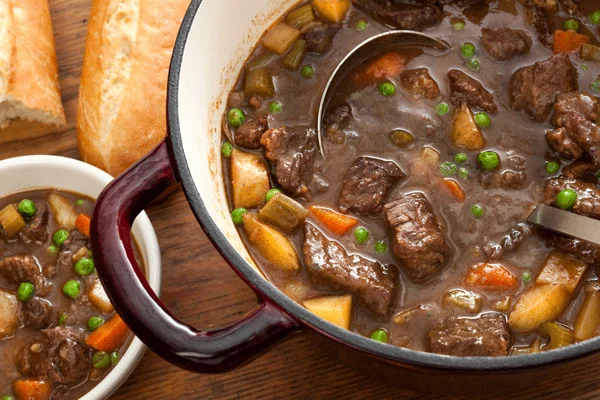
Irish culinary traditions are steeped in the country’s agrarian past and communal culture. The Irish breakfast, with its array of meats, eggs, and bread, sets the tone for the day. Sunday roasts, a family affair, are a weekly ritual.
Holidays such as St. Patrick’s Day showcase traditional dishes like corned beef and cabbage. These traditions are not just about sustenance but about bringing people together, reflecting the Irish ethos of hospitality and celebration.
From Garden Ornament to Irish Icon: The Rise and Fall (and Rise Again) of the Potato
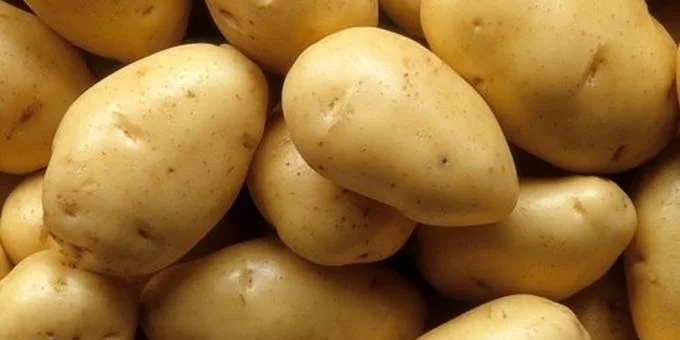
Imagine a humble root vegetable, arriving in Ireland as a mere garden decoration, destined to become the lifeblood of a nation. That’s the story of the potato, a spud that shaped Irish history, cuisine, and culture. Buckle up for a journey through time, exploring how this unlikely hero went from ornamental curiosity to national obsession, and back again.
Planting the Seeds of Change:
It all began in the late 1500s when Sir Walter Raleigh, an English explorer, brought the potato to Ireland. But don’t expect visions of steaming mashed potatoes just yet. These starchy tubers were initially grown for their pretty flowers, not their culinary potential.
A Perfect Storm of Spuds
Fast forward a century, and Ireland faced a growing population with limited land. Enter the potato, the unsung hero. This unassuming crop thrived in even the smallest plots, delivering a mighty punch of calories and nutrients.
Soon, potatoes weren’t just a garden accessory; they were fueling families and transforming society.
From Boom to Bust
By the 18th century, potatoes were king. Smallholdings were carved up to accommodate this prolific crop, and the Irish diet revolved around the humble spud, often partnered with a dash of dairy.
But this dependence came with a hidden cost: vulnerability.
The Bite of the Blight
In the 1840s, tragedy struck. A devastating potato blight wiped out the harvest, plunging Ireland into the Great Famine. With their sole food source gone, millions suffered, emigrated, or perished.
The overreliance on a single crop had exposed a harsh truth.
Spuds: Back for More?
Despite the scars of the famine, the potato persevered. Today, it remains an irreplaceable part of Irish cuisine, celebrated in dishes like the creamy colcannon, the crispy boxty, and the hearty champ.
While its dominance has waned, the potato’s story is a reminder of adaptation, resilience, and the enduring love for a simple, powerful ingredient.
References
Exploring Ireland’s Ingredients: The Flavors of Irish Cuisine
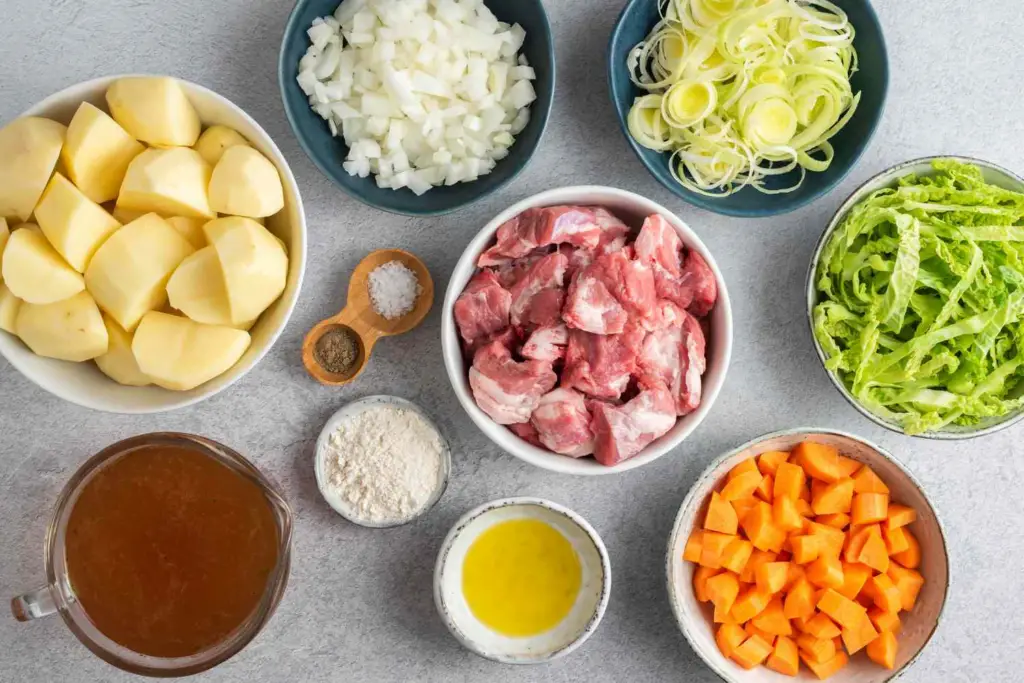
The flavors of Irish cuisine are a testament to its agricultural roots and coastal access. Key ingredients include:
- Potatoes: Prepared in countless ways, they are a culinary staple.
- Dairy: Rich Irish butter and cheeses, thanks to the lush grasslands.
- Beef and Lamb: Grazed on the green hills, their meat is flavorful and tender.
- Seafood: Salmon, cod, and shellfish are central to the coastal diet.
- Root Vegetables: Carrots, turnips, and parsnips feature heavily in stews and soups.
- Barley and Oats: Used in breads and the hearty porridge that starts the day.
These ingredients, combined with the Irish love for storytelling and sharing, create a cuisine that is both nourishing and evocative, much like the land itself.
Irish Cuisine: A Taste of Tradition
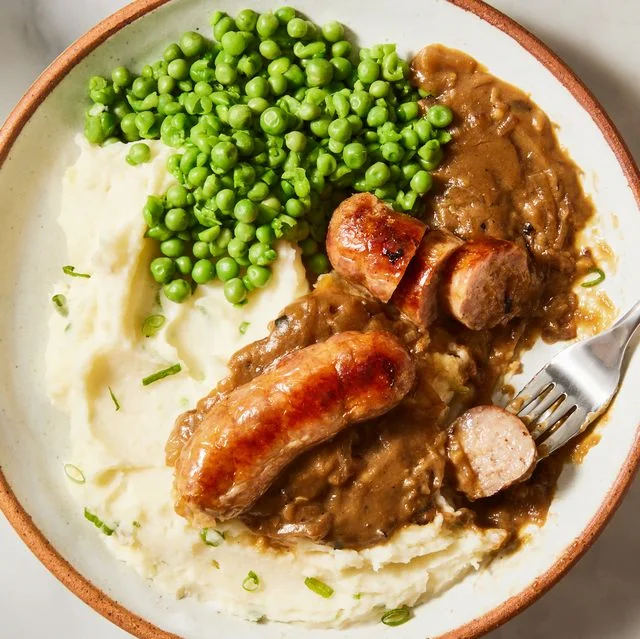
When it comes to Irish cuisine, traditional dishes are the heart and soul of our culinary heritage. Irish cooking is rooted in a deep connection to the land, with recipes that have been handed down through generations.
At the core of Irish traditional dishes lies a deep appreciation for simple, hearty ingredients that showcase the flavors of the Irish countryside. Think tender lamb, creamy potatoes, and earthy root vegetables that come together in stews, casseroles, and bakes that warm the soul.
Irish cuisine may not have the flamboyance of its European counterparts, but what it lacks in showy presentations, it makes up for in wholesome, comforting flavors that have stood the test of time. These authentic Irish recipes are the kind that transport you straight to your grandmother’s kitchen, filling your belly and your heart with warmth and nourishment.
Irish Cuisine – Traditional Dishes

When it comes to Irish traditional dishes, there is no shortage of options. From the iconic Irish stew to boxty pancakes and colcannon, these recipes showcase the flavors and ingredients that are quintessentially Irish.
| Dish | Ingredients | Description |
|---|---|---|
| Irish Stew | Lamb or beef, potatoes, carrots, onions, thyme, bay leaves | A hearty stew made with tender meat and root vegetables, slow-cooked to perfection. |
| BoTraditional Dishesxty | Potatoes, flour, buttermilk, salt, pepper | A type of potato pancake that is crispy on the outside and fluffy on the inside, served with savory toppings like bacon and eggs or smoked salmon. |
| Colcannon | Potatoes, cabbage or kale, butter, milk | A traditional Irish mashed potato dish that is elevated with the addition of hearty greens like cabbage or kale. |
Whether you’re cooking up a storm for your family or whipping up a quick meal for yourself, these authentic Irish recipes are sure to delight your taste buds and transport you straight to the Emerald Isle.
Stay tuned for the next section, where we dive into the legendary Irish Stew, the national dish of Ireland that has captured the hearts and taste buds of people around the world.
National Dish of Ireland

The national dish of Ireland, known as the traditional Irish stew, has been a staple of the country’s cuisine for centuries. Made with lamb or mutton, potatoes, onions, and carrots, it is a hearty and comforting dish that reflects the rich agricultural heritage of the Emerald Isle.
The flavors of the tender meat, earthy potatoes, and aromatic vegetables blend together in a simmering pot, creating a flavorful broth that warms both body and soul.
Whether enjoyed on a chilly winter’s day or as a celebratory meal on St. Patrick’s Day, the national dish of Ireland is a symbol of the country’s culinary tradition and cultural identity.
Celebrating the Tastes of Ireland

Our journey through the national dish and recipes of Ireland has been an exciting adventure, exploring the rich tapestry of traditional Irish food and its cultural significance. But there is much more to celebrate beyond the iconic Irish stew and authentic Irish recipes.
Irish cuisine is a treasure trove of delights, and there are countless dishes worth exploring. For breakfast lovers, the Irish breakfast is a feast of sausages, bacon, eggs, black pudding, and white pudding. Shepherd’s pie is another comforting classic, featuring a hearty mixture of savory beef or lamb, vegetables, and mashed potato topping.
For those with a sweet tooth, Barmbrack is a must-try. This traditional fruitcake is infused with tea and spices, with a slice said to predict the future for whoever finds a ring, coin, or other trinket hidden inside.
As we continue to discover the flavors and traditions of Irish culinary heritage, we are reminded of the warmth and hospitality that define the spirit of Ireland. Whether it’s a simple stew or a rich and complex dish, every bite is an invitation to savor the tastes of Ireland and to celebrate the rich cultural heritage it represents.
So why not embark on your own culinary adventure? With a variety of traditional Irish dishes to explore, you can savor the true taste of Ireland in your own kitchen. Here’s to the vibrant and delicious flavors of Ireland!
How Healthy is Irish Food?
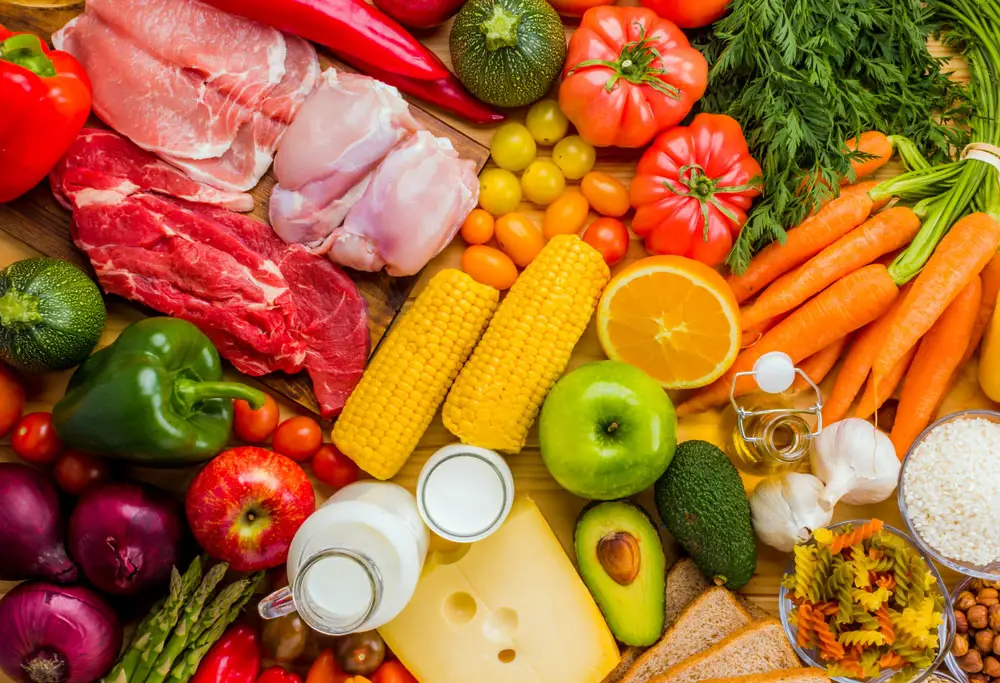
Ireland’s food scene is more than just hearty stews and creamy pints. It’s a ** tapestry woven from history, geography, and culture**, offering both delicious bites and interesting health considerations.
Buckle up as we explore the good, the not-so-good, and everything in between when it comes to Irish food and its impact on the nation’s health.
A Balanced Plate, Irish Style
The Irish Food Pyramid guides the way, advocating for a diet rich in vibrant fruits and vegetables, energy-boosting whole grains, calcium-packed dairy products, and essential protein sources like meat, fish, and beans.
Sticking to this roadmap leads to well-rounded meals and overall well-being.
From the Land to Your Plate
Traditional Irish food boasts some real nutritional gems:
- Oatmeal: This breakfast staple is a champion of fiber, protein, and complex carbs, keeping your cholesterol in check.
- Salmon: Dive into a delicious source of omega-3 fatty acids, key for a healthy heart.
- Potatoes: This humble spud reigns supreme, providing complex carbs, fiber, and vitamin C.
- Brown Bread: Packed with fiber and complex carbs, it’s a hearty and nutritious choice.
The health of the Irish population, especially concerning diet and life expectancy, is a multifaceted topic. Let’s explore the key aspects:
Living Longer, Living Better: Exploring the Health Landscape of Ireland
Ireland has enjoyed a heartening trend in recent years: people are living longer. Women now reach an average of 84 years, while men follow closely behind at 80 years, both surpassing the EU average.
But there’s more to the story than just numbers. Let’s delve into the dynamics of Irish life expectancy, exploring the good, the not-so-good, and how we can create a healthier future.
Living Longer, But Slower?
While life expectancy is rising, the pace of improvement has slowed. Conditions like circulatory diseases are casting a shadow, reminding us that longevity needs to be coupled with vibrant health. Understanding these factors is crucial for further progress.
Food Choices: A Double-Edged Sword
Irish food boasts a rich heritage, but some popular elements present sustainability challenges. The presence of unsustainable foods impacts not only your wallet but also your well-being.
Overreliance on certain animal protein sources might not be the best call, both financially and nutritionally. And let’s not forget the significant chunk of Irish adults’ daily spending going towards alcohol.
The Journey Continues
The story of Irish health is still being written. By understanding the challenges and embracing sustainable solutions, we can pave the way for a future were living longer means living better. It’s about finding a balance between cherished traditions and informed choices, creating a future where both people and the planet thrive.
References
10 Popular Irish Recipes

These are just a few of the many delicious Irish dishes waiting to be explored. So, grab your fork and embark on a culinary adventure through the flavors of Ireland!
Irish Stew
A hearty classic featuring tender lamb, root vegetables, potatoes, and Guinness (optional) for a rich, deeply flavorful broth. Perfect for a cozy night in.
Colcannon
This mashed potato masterpiece combines creamy spuds with buttery cabbage, scallions, and sometimes bacon for a delightful mix of textures and flavors.
Boxty
Savory potato pancakes made with grated raw and cooked potatoes, sometimes with onions and herbs. Crispy on the outside and fluffy on the inside, they’re ideal for breakfast, lunch, or a satisfying snack.
Irish Soda Bread
Dense and slightly sweet, this quick bread uses baking soda instead of yeast, perfect for a warm slice with butter and jam for breakfast or alongside any meal.
Seafood Chowder
Creamy and packed with fresh fish, shellfish, potatoes, and vegetables, this comforting chowder is a taste of the Irish coast in every spoonful.
Bacon and Cabbage
A simple yet satisfying dish featuring crispy bacon, tender cabbage, and creamy mashed potatoes. It’s a classic for a reason!
Shepherd’s Pie
Ground lamb nestled under a creamy mashed potato topping, often with vegetables like carrots and peas. Comfort food heaven!
Guinness Cake
This surprisingly light and decadent cake uses the famous stout for a unique flavor and moist texture. A must-try for chocolate and beer lovers.
Irish Coffee
A warm hug in a mug, combining hot coffee, Irish whiskey, brown sugar, and a generous dollop of whipped cream. Perfect for a pick-me-up or after-dinner treat.
Dingle Gin & Tonic
Not technically a dish, but a refreshing and quintessential Irish experience. Dingle Gin, produced in the charming coastal town of Dingle, paired with tonic and a slice of citrus, is a perfect way to toast the Emerald Isle.
Irish Recipes you can try in your own Kitchen
Are you ready to try your hand at Irish cooking? With a few key ingredients and some simple techniques, you can bring the authentic taste of Ireland into your own kitchen. Here are some recipes to get you started:
The Irish National Dish : The Legendary Irish Stew

When it comes to traditional Irish food, nothing is more iconic than the legendary Irish National dish – Irish stew. This hearty dish has been a staple in Irish households for generations, and it’s easy to see why. Combining tender meat, root vegetables, and aromatic herbs, Irish stew is a delicious and comforting meal that warms the soul.
This dish has a long and rich history in Ireland, with many variations and adaptations across the country. However, the key elements remain the same: lamb or beef, potatoes, carrots, onions, and a generous helping of herbs such as rosemary and thyme. It’s a one-pot wonder that’s easy to make and perfect for sharing with family and friends.
Irish stew is not only popular in Ireland but also across the world. In fact, it is often considered the national dish of Ireland. It’s a dish that speaks to the heart and soul of Irish culinary heritage. So, if you want to enjoy a taste of traditional Irish food, there’s no better place to start than with a bowl of hearty, delicious Irish stew.
Here’s a classic recipe for Irish Stew:
Irish National Dish – Irish Stew Ingredients:
- 500g lamb or mutton, cut into chunks (you can also use beef as an alternative)
- 4 large potatoes, peeled and sliced
- 2 large onions, sliced
- 3-4 carrots, peeled and sliced
- 2 leeks, cleaned and sliced (optional)
- 4 cups beef or chicken stock
- 1 cup stout beer (like Guinness) or red wine (optional)
- 2 tablespoons vegetable oil or butter
- 2 teaspoons fresh thyme leaves or 1 teaspoon dried thyme
- 2 bay leaves
- Salt and pepper to taste
- Fresh parsley, chopped (for garnish)
Ireland’s National Dish – Preparation Instructions:
Browning the Meat
- In a large pot or Dutch oven, heat the vegetable oil or butter over medium heat.
- Add the lamb or mutton chunks and brown them on all sides.
- Remove the meat and set it aside.
Sautéing the Vegetables
- In the same pot, add the sliced onions and sauté until they become translucent.
- If you’re using leeks, add them now and sauté for a few more minutes.
Returning the Meat
- Add the browned meat back to the pot.
- If you’re using stout beer or wine, pour it in now and let it simmer for a few minutes to reduce slightly.
Adding Stock and Seasoning
- Pour in the beef or chicken stock.
- Add the thyme, bay leaves, salt, and pepper.
- Stir everything together.
Simmering
- Reduce the heat to low, cover the pot, and let the stew simmer for about 1 hour.
- This allows the meat to become tender.
Adding Potatoes and Carrots
- After 1 hour, add the sliced potatoes and carrots to the pot.
- Stir them into the stew and continue to simmer for another 30 minutes, or until the potatoes and carrots are tender.
Checking Seasoning
- Taste the stew and adjust the seasoning if necessary.
- Remove the bay leaves.
Serving Ireland’s National Dish
Serve the Irish Stew hot, garnished with chopped fresh parsley.
Irish Stew is best enjoyed with crusty bread or soda bread on the side. It’s a warming and filling dish, perfect for cold days or when you need some comfort food.
Enjoy your traditional Irish Stew!
Irish Food – Kerry Lamb Stew

Savoring Irish Comfort: Kerry Lamb Stew
History and Background
Delight in the heartwarming flavors of Ireland with Kerry Lamb Stew, a dish deeply rooted in the country’s rich culinary traditions. Originating from the lush landscapes of County Kerry, this stew reflects the hearty and wholesome nature of Irish cuisine.
Historically, the recipe emerged as a way for Irish families to make the most of available ingredients, showcasing the abundance of fresh lamb, root vegetables, and aromatic herbs. Today, Kerry Lamb Stew stands as a symbol of Irish hospitality and the comforting warmth found in every bowl.
Irish Food – Kerry Lamb Stew Ingredients
Prepare to bring a taste of Ireland to your table with these ingredients:
- 2 lbs lamb stew meat, cubed
- 4 large potatoes, peeled and diced
- 3 carrots, peeled and sliced
- 2 onions, chopped
- 2 cloves garlic, minced
- 2 tablespoons tomato paste
- 4 cups beef or vegetable broth
- 1 cup red wine (optional)
- 2 bay leaves
- 1 teaspoon dried thyme
- Salt and pepper to taste
- 2 tablespoons vegetable oil
- Fresh parsley, chopped (for garnish)
Irish Food – Kerry Lamb Stew Recipe
Searing the Lamb
- In a large pot, heat vegetable oil over medium-high heat.
- Add the lamb stew meat, searing on all sides until browned.
Building the Stew Base
- Stir in chopped onions and minced garlic, cooking until softened.
- Add tomato paste, distributing it evenly among the ingredients.
Simmering the Stew
- Pour in the red wine (if using), scraping the bottom of the pot to release any flavorful bits.
- Add diced potatoes and sliced carrots to the pot.
- Pour in the beef or vegetable broth, ensuring the lamb and vegetables are fully covered.
- Toss in bay leaves, dried thyme, salt, and pepper.
Cooking to Perfection
- Bring the stew to a boil, then reduce the heat to low and cover.
- Simmer for 1.5 to 2 hours or until the lamb is tender and the flavors meld together.
Garnish and Serve
- Remove bay leaves before serving.
- Garnish with chopped fresh parsley for a burst of color and freshness.
Serving Size: 6-8 people
Cooking Time: 1.5 – 2 hours
Nutritional Information (per serving):
- Calories: 400
- Protein: 25g
- Carbohydrates: 30g
- Fat: 18g
- Fiber: 4g
Indulge in the comforting embrace of Ireland with Kerry Lamb Stew, a dish that encapsulates the warmth and flavors of Irish kitchens. Share this hearty stew with friends and family, and experience the taste of Irish hospitality at your own table.
Irish Food – Irish Soda Bread

Baking Tradition: Irish Soda Bread
History and Background
Step into the heart of Ireland’s baking traditions with Irish Soda Bread, a staple in Irish households for generations. Originating from a time when basic ingredients like flour, baking soda, and buttermilk were readily available, this rustic bread has become a symbol of simplicity and wholesome goodness.
Historically, Irish Soda Bread was a practical solution for families with limited resources. Today, it stands as a cherished part of Irish cuisine, enjoyed for its dense texture and hearty flavor.
Irish Food – Irish Soda Bread Ingredients
For a taste of traditional Irish baking, gather these simple ingredients:
- 4 cups all-purpose flour
- 1 teaspoon baking soda
- 1 teaspoon salt
- 1 ¾ cups buttermilk
Irish Food – Irish Soda Bread Recipe
Mixing Dry Ingredients
- Preheat your oven to 425°F (220°C).
- In a large mixing bowl, combine the all-purpose flour, baking soda, and salt.
Adding Buttermilk
- Make a well in the center of the dry ingredients and pour in the buttermilk.
- Use a wooden spoon or your hands to mix until the dough comes together.
Kneading and Shaping
- Turn the dough out onto a floured surface and knead it briefly, just until it forms a round shape.
- Place the dough on a baking sheet lined with parchment paper.
Scoring the Dough
- Use a sharp knife to make a deep “X” across the top of the dough.
- This helps the bread bake evenly and allows the heat to penetrate the center.
Baking to Perfection
- Bake in the preheated oven for 15 minutes, then reduce the temperature to 400°F (200°C) and bake for an additional 20-25 minutes.
- The bread is done when it has a golden-brown crust and sounds hollow when tapped on the bottom.
Cooling and Serving
- Allow the Irish Soda Bread to cool on a wire rack before slicing.
- Serve with butter, jams, or alongside a warm bowl of soup.
Serving Size: 8-10 slices
Cooking Time: 35-40 minutes
Nutritional Information (per serving – 1 slice):
- Calories: 180
- Protein: 5g
- Carbohydrates: 35g
- Fat: 1g
- Fiber: 2g
Bake a piece of Irish tradition with this simple and delicious Irish Soda Bread. Whether enjoyed fresh out of the oven or toasted the next day, the rustic charm and flavor of this bread will transport you to the heart of Ireland’s culinary heritage.
Irish Food – Seafood Chowder

Irish Coastal Delight: Seafood Chowder
History and Background
Dive into the coastal flavors of Ireland with Seafood Chowder, a dish that captures the essence of the country’s rich maritime heritage. Hailing from the rugged shores of the Atlantic, this hearty chowder reflects the abundance of fresh seafood found in Irish waters.
Historically, seafood chowders were a staple among coastal communities, combining the daily catch with wholesome ingredients to create a comforting and nourishing meal. Today, this dish stands as a delicious testament to Ireland’s connection to the sea.
Irish Food – Seafood Chowder Ingredients
Embark on a culinary journey with these ocean-inspired ingredients:
- 1 lb mixed seafood (salmon, cod, shrimp, mussels), cleaned and chopped
- 2 tablespoons butter
- 1 onion, finely chopped
- 2 leeks, sliced
- 2 potatoes, peeled and diced
- 2 carrots, diced
- 2 celery stalks, diced
- 3 cups fish or vegetable broth
- 1 cup whole milk
- 1 cup heavy cream
- 2 tablespoons all-purpose flour
- 1 bay leaf
- Salt and pepper to taste
- Fresh parsley, chopped (for garnish)
Irish Food – Seafood Chowder Recipe
Prepping the Seafood and Vegetables
- Clean and chop the mixed seafood into bite-sized pieces.
- In a large pot, melt butter over medium heat and sauté the finely chopped onion and sliced leeks until softened.
- Add diced potatoes, carrots, and celery to the pot, cooking until the vegetables start to soften.
Creating the Chowder Base
- Sprinkle flour over the vegetables, stirring to coat and create a roux.
- Gradually pour in fish or vegetable broth, stirring continuously to avoid lumps.
- Add whole milk and heavy cream to the pot, stirring until the chowder base thickens.
- Toss in the bay leaf and season with salt and pepper to taste.
Cooking the Seafood
- Gently add the chopped seafood to the chowder, allowing it to simmer until the seafood is cooked through.
- Be cautious not to overcook, as seafood cooks quickly.
Garnish and Serve
- Remove the bay leaf before serving.
- Ladle the Seafood Chowder into bowls and garnish with freshly chopped parsley.
Serving Size: 4-6 people
Cooking Time: 25-30 minutes
Nutritional Information (per serving):
- Calories: 400
- Protein: 20g
- Carbohydrates: 30g
- Fat: 25g
- Fiber: 3g
Savor the taste of the Irish coast with this Seafood Chowder, a bowl of warmth that brings the flavors of the ocean to your table. Share this comforting dish with friends and family and experience the culinary embrace of Ireland’s coastal heritage.
Irish Food – Bacon and Cabbage

Irish Classic: Bacon and Cabbage
History and Background
Embark on a culinary journey to Ireland with the timeless and beloved dish, Bacon and Cabbage. Rooted in the country’s agricultural traditions, this recipe epitomizes simplicity and hearty flavors.
Historically, it emerged as a humble yet satisfying meal for Irish families, showcasing the abundance of locally sourced ingredients. Originating from the lush green landscapes of Ireland, Bacon and Cabbage has become a symbol of wholesome Irish cooking, providing nourishment and comfort to generations.
Irish Food – Bacon and Cabbage Ingredients
Prepare to enjoy a taste of Ireland with these straightforward ingredients:
- 1 head of green cabbage, quartered
- 1.5 lbs Irish bacon or back bacon, sliced
- 6 large potatoes, peeled and quartered
- 1 large onion, peeled and sliced
- 2 tablespoons butter
- Salt and pepper to taste
- Fresh parsley, chopped (for garnish)
Irish Food – Bacon and Cabbage Recipe
Boiling the Bacon
- In a large pot, bring water to a boil.
- Add the sliced Irish bacon to the boiling water and simmer for about 30 minutes, skimming off any foam that rises to the surface.
Cooking the Potatoes and Cabbage
- In a separate pot, add quartered potatoes and boil until tender.
- Add the quartered cabbage to the boiling water during the last 10 minutes of the potato cooking time.
- Drain the potatoes and cabbage.
Sautéing Onions and Assembling
- In a skillet, melt butter over medium heat.
- Add sliced onions and sauté until golden brown.
Serving and Garnishing
- Arrange boiled potatoes, cabbage, and sliced bacon on a platter.
- Top with sautéed onions and garnish with chopped fresh parsley.
- Season with salt and pepper to taste.
Serving Size: 4-6 people
Cooking Time: 40 minutes
Nutritional Information (per serving):
- Calories: 400
- Protein: 15g
- Carbohydrates: 35g
- Fat: 20g
- Fiber: 5g
Experience the heart and soul of Irish cooking with Bacon and Cabbage, a dish that embodies the essence of Ireland’s agricultural heritage. This simple yet flavorful meal is perfect for sharing with family and friends, bringing the warmth of Irish hospitality to your table.
Irish Food – Guinness Cake

Indulging in Sweet Bliss: Guinness Cake
History and Background
Discover the sweet side of Ireland with Guinness Cake, a decadent dessert that brings together the rich flavors of Ireland’s most iconic beverage. Originating from the pub culture of Ireland, this cake is a delightful fusion of the country’s love for Guinness stout and indulgent treats.
Guinness Cake has become a modern classic, offering a unique twist on traditional Irish baking. With a history deeply rooted in convivial gatherings and celebrations, this cake embodies the spirit of Irish hospitality.
Irish Food – Guinness Cake Ingredients
Delight your taste buds with the ingredients needed for this scrumptious Guinness Cake:
- 1 cup Guinness stout
- 1 cup unsalted butter
- 3/4 cup unsweetened cocoa powder
- 2 cups all-purpose flour
- 2 cups granulated sugar
- 1 1/2 teaspoons baking soda
- 3/4 cup sour cream
- 2 large eggs
- 1 teaspoon vanilla extract
- Cream cheese frosting (store-bought or homemade)
- Chocolate shavings (for garnish)
Irish Food – Guinness Cake Recipe
Preparing the Cake Batter
- Preheat your oven to 350°F (175°C) and grease a round cake pan.
- In a saucepan, heat the Guinness and butter until the butter melts.
- Whisk in the cocoa powder until smooth and set aside to cool.
Mixing Dry Ingredients
- In a large bowl, whisk together the flour, sugar, and baking soda.
- Pour the Guinness mixture into the dry ingredients and mix until well combined.
Incorporating Wet Ingredients
- Add the sour cream, eggs, and vanilla extract to the batter, mixing until smooth.
- Pour the batter into the prepared cake pan.
Baking to Perfection
- Bake for 40-45 minutes or until a toothpick inserted into the center comes out clean.
- Allow the cake to cool completely before frosting.
Frosting and Garnishing
- Spread a generous layer of cream cheese frosting over the cooled cake.
- Garnish with chocolate shavings for a delightful finish.
Serving Size: 8-10 people
Cooking Time: 40-45 minutes
Nutritional Information (per serving):
- Calories: 450
- Protein: 5g
- Carbohydrates: 60g
- Fat: 25g
- Fiber: 3g
Indulge in the sweet magic of Ireland with Guinness Cake, a dessert that perfectly combines the richness of Guinness stout with the decadence of chocolate. Whether shared with friends or enjoyed on your own, this cake is a delicious celebration of Irish flavors.
Irish Food – Mussels

Exploring Irish Seas: Irish Mussels
History and Background
Dive into the flavors of the Irish coast with Irish Mussels, a dish that celebrates the abundance of fresh seafood found in the Atlantic waters surrounding Ireland. This culinary gem reflects the maritime traditions of coastal communities, where mussels have been a staple for generations. The history of Irish Mussels is intertwined with the vibrant fishing culture of the region, embodying the
simplicity and freshness of Irish cuisine. Served with a touch of garlic and herbs, these mussels provide a taste of the sea that has been enjoyed along the Irish shores for centuries.
Irish Food – Mussels Ingredients
Prepare for a seafood feast with these ingredients:
- 2 lbs fresh Irish mussels, cleaned and debearded
- 2 tablespoons olive oil
- 4 cloves garlic, minced
- 1 cup dry white wine
- 1 cup cherry tomatoes, halved
- 1/4 cup fresh parsley, chopped
- Salt and pepper to taste
- Crusty bread (for serving)
Irish Food – Mussels Recipe
Cleaning and Preparing Mussels
- Rinse the mussels under cold water, scrubbing away any debris.
- Remove the beards by pulling them gently towards the hinge of the shell.
Sautéing Garlic and Adding Mussels
- In a large pot, heat olive oil over medium heat.
- Add minced garlic and sauté until fragrant.
- Pour in the white wine and bring it to a simmer.
Cooking Mussels and Adding Tomatoes
- Add the cleaned mussels to the pot, covering with a lid.
- Steam the mussels for 5-7 minutes or until they open.
- Toss in halved cherry tomatoes, cooking until they are just softened.
Seasoning and Garnishing
- Season the mussels with salt and pepper to taste.
- Sprinkle chopped fresh parsley over the top for a burst of color and freshness.
Serving with Crusty Bread
- Serve the Irish Mussels in bowls, accompanied by crusty bread for soaking up the flavorful broth.
Serving Size: 2-4 people
Cooking Time: 15 minutes
Nutritional Information (per serving):
- Calories: 300
- Protein: 20g
- Carbohydrates: 15g
- Fat: 10g
- Fiber: 2g
Immerse yourself in the taste of the Irish seas with this simple and delightful Irish Mussels recipe. Perfect for sharing with friends or savoring on your own, this dish brings the essence of the coast to your table.
Irish Food – Smoked Salmon

Savoring Elegance: Irish Smoked Salmon
History and Background
Embark on a culinary journey through Ireland’s coastal traditions with Irish Smoked Salmon, a dish that reflects the country’s long-standing love affair with the sea. Hailing from the coastal regions where fishing is a way of life, smoked salmon has been a staple in Irish cuisine for centuries.
Traditionally prepared by smoking salmon over oak wood, this dish captures the essence of simplicity and sophistication. Whether enjoyed on its own or as part of a delightful seafood platter, Irish Smoked Salmon embodies the rich maritime heritage of the Emerald Isle.
Irish Food – Smoked Salmon Ingredients
Delight in the exquisite taste of Irish Smoked Salmon with these ingredients:
- 8 oz Irish smoked salmon slices
- 1 lemon, thinly sliced
- Fresh dill (for garnish)
- Capers (optional, for serving)
- Crusty bread or crackers (for serving)
Irish Food – Smoked Salmon Recipe
Prepping the Presentation
- Lay out the smoked salmon slices on a serving platter.
- Place thin lemon slices on top of the salmon for a citrusy touch.
Garnishing with Fresh Dill
- Sprinkle fresh dill over the smoked salmon for a burst of herbal flavor.
- Add capers on the side for those who enjoy a tangy kick.
Serving Suggestions
- Serve the Irish Smoked Salmon with your choice of crusty bread or crackers.
- Arrange the platter with elegance, creating an inviting display for your guests.
Serving Size: 4-6 people
Preparation Time: 10 minutes
Nutritional Information (per serving):
- Calories: 120
- Protein: 15g
- Carbohydrates: 1g
- Fat: 7g
- Fiber: 0g
Embrace the sophistication of Irish Smoked Salmon, a dish that pays homage to the coastal beauty and culinary expertise of Ireland. Whether as a light appetizer or part of a grand seafood feast, this delicacy promises a taste of the sea with every exquisite bite.
Irish Food – Black and White Pudding

Irish Culinary Harmony: Black and White Pudding
History and Background
Delve into the heart of Irish breakfast traditions with Black and White Pudding, a culinary duo that has graced Irish tables for centuries. Originating from the island’s rich agricultural history, these puddings showcase the resourcefulness of Irish cuisine, utilizing every part of the pig.
The Black Pudding, made with blood, and the White Pudding, a mix of oatmeal and pork, represent a harmonious blend of flavors and textures. Hailing from the countryside, this dish reflects the farm-to-table ethos that defines Irish gastronomy.
Irish Food – Black and White Pudding Ingredients
Experience the savory delight of Black and White Pudding with these essential ingredients:
- 1 lb black pudding (blood sausage)
- 1 lb white pudding
- 2 tablespoons vegetable oil (for frying)
- Eggs (optional, for serving)
- Toast or Irish soda bread (for serving)
Irish Food – Black and White Pudding Recipe
Prepping the Puddings
- Slice the black and white pudding into 1/2-inch thick rounds.
- If using white pudding in casing, remove the casing before cooking.
Cooking the Puddings
- Heat vegetable oil in a pan over medium heat.
- Fry the pudding rounds for 4-5 minutes on each side or until they are golden brown and cooked through.
Serving Suggestions
- Serve the Black and White Pudding hot, accompanied by eggs cooked to your preference.
- Pair with toast or Irish soda bread for a traditional Irish breakfast.
Serving Size: 4 people
Cooking Time: 15 minutes
Nutritional Information (per serving):
- Calories: 300
- Protein: 15g
- Carbohydrates: 10g
- Fat: 20g
- Fiber: 2g
Embrace the flavors of Irish breakfast with Black and White Pudding, a dish that combines tradition, simplicity, and the essence of the Irish countryside. Perfect for a hearty morning meal or a delightful brunch, these puddings provide a taste of Ireland’s culinary heritage.
Irish Food – Coddle

Irish Comfort in a Pot: Coddle
History and Background
Explore the warmth and heartiness of Irish cuisine with Coddle, a comforting one-pot dish that has its roots in the working-class neighborhoods of Dublin. Originating in the 18th century, Coddle was a practical way for families to use up leftovers and inexpensive ingredients, making it a staple in Irish households.
This dish symbolizes the resourcefulness and resilience of the Irish people during times of scarcity. Today, Coddle stands as a cherished comfort food, offering a taste of Dublin’s culinary history.
Irish Food – Coddle Ingredients
Savor the simplicity of Coddle with these basic ingredients:
- 1 lb Irish pork sausages
- 1 lb bacon, chopped
- 2 large onions, sliced
- 4 large potatoes, peeled and thickly sliced
- 2 carrots, sliced
- 2 cups chicken or vegetable broth
- Salt and pepper to taste
- Fresh parsley, chopped (for garnish)
Irish Food – Coddle Recipe
Preparing the Sausages and Bacon
- In a large pot, brown the sausages over medium heat.
- Remove sausages and brown the chopped bacon in the same pot.
Sautéing Onions and Assembling Ingredients
- Sauté sliced onions in the pot until softened.
- Layer sliced potatoes and carrots on top of the onions.
Assembling the Coddle
- Place the browned sausages and bacon on top of the vegetables.
- Pour chicken or vegetable broth over the ingredients.
- Season with salt and pepper to taste.
Simmering to Perfection
- Cover the pot and simmer on low heat for 1.5 to 2 hours, allowing the flavors to meld.
- Ensure the potatoes and carrots are tender before serving.
Garnishing and Serving
- Garnish with chopped fresh parsley for a burst of color and freshness.
- Serve hot, spooning a generous portion of Coddle into each bowl.
Serving Size: 6-8 people
Cooking Time: 1.5 – 2 hours
Nutritional Information (per serving):
- Calories: 400
- Protein: 20g
- Carbohydrates: 30g
- Fat: 25g
- Fiber: 4g
Embrace the heartwarming flavors of Ireland with Coddle, a dish that encapsulates the spirit of Dublin’s working-class history. Share this comforting meal with family and friends, and experience the taste of Irish tradition in every spoonful.
Irish Food – Irish Sausages & Champ

Discovering Irish Comfort: Irish Sausages & Champ
History and Background
Immerse yourself in the cozy and flavorful world of Irish comfort food with Irish Sausages and Champ. Hailing from the lush landscapes and hearty kitchens of Ireland, this dish brings together two classic elements of Irish cuisine. Irish sausages, known for their savory goodness, and champ, a simple yet delightful potato dish, have been staples in Irish households for generations.
Rooted in the tradition of using locally sourced ingredients, this recipe reflects the warmth and simplicity of Irish home cooking.
Irish Food – Irish Sausages & Champ Ingredients
Experience the heartiness of Irish Sausages and Champ with these simple ingredients:
- 1 lb Irish pork sausages
- 4 cups potatoes, peeled and chopped
- 1 cup scallions (green onions), finely chopped
- 1 cup whole milk
- 1/2 cup unsalted butter
- Salt and pepper to taste
- Onion gravy (optional, for serving)
Irish Food – Irish Sausages & Champ Recipe
Cooking the Sausages
- In a pan over medium heat, cook the Irish pork sausages until browned and cooked through.
- Remove sausages from the pan and set aside.
Boiling and Mashing Potatoes
- Boil the chopped potatoes in a pot until tender.
- Drain the potatoes and mash them with a potato masher.
Preparing Champ
- In a separate pan, heat the whole milk until warm.
- Add finely chopped scallions to the warm milk and let them steep for a few minutes.
- Pour the scallion-infused milk over the mashed potatoes.
- Add unsalted butter to the potatoes and scallions.
- Season with salt and pepper, then mix until the champ is smooth and creamy.
Serving Irish Sausages & Champ
- Plate the mashed champ alongside the cooked Irish sausages.
- Optionally, serve with onion gravy for extra flavor.
Serving Size: 4-6 people
Cooking Time: 30 minutes
Nutritional Information (per serving):
- Calories: 450
- Protein: 15g
- Carbohydrates: 35g
- Fat: 30g
- Fiber: 5g
Savor the wholesome goodness of Ireland with Irish Sausages and Champ, a dish that brings together the best of Irish flavors in a comforting and satisfying meal. Whether enjoyed on a cozy evening or served as a family favorite, this recipe embodies the heart and soul of Irish home cooking.
Irish Food – Skillet Fudgy Brownie Pudding

Indulgent Bliss: Skillet Fudgy Brownie Pudding
History and Background
Step into the world of decadence and sweetness with Skillet Fudgy Brownie Pudding, a delightful treat that marries the rich history of chocolate with the comfort of home-baked goodness. While not strictly traditional Irish, this dessert pays homage to Ireland’s growing love for irresistible sweets.
The warmth of the skillet and the gooey fudginess of the brownie pudding evoke the cozy atmosphere of an Irish kitchen, where friends and family gather to share moments of joy over delicious desserts.
Irish Food – Skillet Fudgy Brownie Pudding Ingredients
Dive into the world of chocolatey indulgence with these ingredients:
- 1 cup all-purpose flour
- 1/2 cup cocoa powder
- 1 cup granulated sugar
- 1/2 cup brown sugar
- 1/2 teaspoon salt
- 1 cup milk
- 1/2 cup unsalted butter, melted
- 2 teaspoons vanilla extract
- 1 cup chocolate chips
- 1 cup hot water
Irish Food – Skillet Fudgy Brownie Pudding Recipe
Mixing Dry Ingredients
- In a bowl, whisk together the all-purpose flour, cocoa powder, granulated sugar, brown sugar, and salt.
Adding Wet Ingredients
- Pour in the milk, melted unsalted butter, and vanilla extract to the dry ingredients.
- Mix until a smooth batter forms.
Incorporating Chocolate Chips
- Fold in the chocolate chips, ensuring an even distribution throughout the batter.
Preparing the Skillet
- Preheat your oven to 350°F (175°C).
- Grease a skillet or baking dish.
Creating Layers and Baking
- Pour the batter into the prepared skillet.
- In a separate bowl, mix the hot water with any remaining sugar.
- Gently pour the hot water mixture over the brownie batter. Do not stir.
Baking to Perfection
- Bake for 30-35 minutes or until the top is set, and the center remains gooey.
- Allow the Skillet Fudgy Brownie Pudding to cool slightly before serving.
Serving Size: 6-8 people
Cooking Time: 30-35 minutes
Nutritional Information (per serving):
- Calories: 350
- Protein: 4g
- Carbohydrates: 50g
- Fat: 16g
- Fiber: 3g
Transport your taste buds to a realm of chocolatey ecstasy with this Skillet Fudgy Brownie Pudding. Perfect for sharing or indulging in a personal treat, this dessert captures the essence of Irish warmth and hospitality.
Irish Food – Irish Potato Candy

Sweet Tradition: Irish Potato Candy
History and Background
Embark on a journey into the sweet side of Irish culture with Irish Potato Candy, a delightful treat that has been cherished for generations. Contrary to its name, this candy doesn’t contain potatoes; instead, it’s a nostalgic confectionery inspired by the traditional potato harvest celebrations in Ireland.
Originating from the rural communities where potatoes were a staple, Irish Potato Candy reflects the resourcefulness and creativity of the Irish people. As sweet as it is charming, this candy has become a symbol of Irish culinary ingenuity.
Irish Food – Irish Potato Candy Ingredients
Experience the sweetness of Irish Potato Candy with these simple ingredients:
- 1/4 cup unsalted butter, softened
- 4 ounces cream cheese, softened
- 1 teaspoon vanilla extract
- 4 cups powdered sugar
- 2 1/2 cups sweetened shredded coconut
- Ground cinnamon (for coating)
Irish Food – Irish Potato Candy Recipe
Preparing the Candy Base
- In a mixing bowl, cream together softened unsalted butter and cream cheese.
- Add vanilla extract and continue to mix until well combined.
Incorporating Dry Ingredients
- Gradually add powdered sugar to the mixture, ensuring a smooth consistency.
- Fold in sweetened shredded coconut until evenly distributed.
Shaping the Candy
- Refrigerate the mixture for about 30 minutes to make it easier to handle.
- Take small portions and roll them into bite-sized potato shapes.
Coating with Cinnamon
- Roll each candy in ground cinnamon, giving them the appearance of freshly harvested potatoes.
Chilling and Serving
- Place the shaped candies on a parchment-lined tray and refrigerate until firm.
- Serve chilled and enjoy the sweet nostalgia of Irish Potato Candy.
Serving Size: Approximately 20 pieces
Preparation Time: 1 hour (including chilling time)
Nutritional Information (per serving):
- Calories: 120
- Protein: 1g
- Carbohydrates: 20g
- Fat: 5g
- Fiber: 1g
Bring a touch of Irish sweetness to your palate with this whimsical Irish Potato Candy. Perfect for sharing or gifting, these little treats encapsulate the joy and creativity of Irish culinary traditions.
Irish Food – Bailey’s Chocolate Cream Pie

Decadence in Every Slice: Bailey’s Chocolate Cream Pie
History and Background
Indulge in the luxurious fusion of Irish spirit and chocolatey delight with Bailey’s Chocolate Cream Pie. Born from the love of Ireland’s famous cream liqueur, this dessert pays homage to the rich tradition of Bailey’s Irish Cream.
The marriage of velvety chocolate and the smoothness of Bailey’s creates a pie that reflects the sophistication and indulgence of Irish treats. Whether enjoyed in a Dublin café or crafted at home, this pie encapsulates the essence of Irish hospitality and culinary innovation.
Irish Food – Bailey’s Chocolate Cream Pie Ingredients
Delight your taste buds with the ingredients for Bailey’s Chocolate Cream Pie:
- 1 1/2 cups chocolate cookie crumbs
- 1/3 cup unsalted butter, melted
- 1/4 cup granulated sugar
- 1 1/2 cups semisweet chocolate chips
- 1/4 cup cornstarch
- 1/2 cup granulated sugar
- 1/4 teaspoon salt
- 2 1/2 cups whole milk
- 3 large egg yolks, beaten
- 1/4 cup Bailey’s Irish Cream
- 1 teaspoon vanilla extract
- 1 cup heavy cream
- 2 tablespoons powdered sugar
Irish Food – Bailey’s Chocolate Cream Pie Recipe
Creating the Chocolate Crust
- Preheat the oven to 350°F (175°C).
- In a bowl, combine chocolate cookie crumbs, melted butter, and 1/4 cup granulated sugar.
- Press the mixture into a pie dish to form the crust.
- Bake for 10 minutes and let it cool.
Preparing Chocolate Filling
- In a saucepan, melt chocolate chips over low heat.
- In a separate bowl, whisk together cornstarch, 1/2 cup granulated sugar, and salt.
- Gradually add milk to the dry ingredients, mixing to create a smooth consistency.
- Incorporate beaten egg yolks into the mixture.
- Pour the milk mixture into the saucepan with melted chocolate.
- Cook over medium heat until thickened.
- Remove from heat, stir in Bailey’s Irish Cream and vanilla extract.
- Pour the chocolate filling into the cooled crust.
Whipping Cream Topping
- In a chilled bowl, whip heavy cream and powdered sugar until stiff peaks form.
- Spread the whipped cream over the chocolate filling.
Chilling and Serving
- Refrigerate the pie for at least 4 hours or until set.
- Slice and serve chilled, savoring the decadence of Bailey’s Chocolate Cream Pie.
Serving Size: 8 people
Cooking Time: 30 minutes (plus chilling time)
Nutritional Information (per serving):
- Calories: 500
- Protein: 5g
- Carbohydrates: 45g
- Fat: 35g
- Fiber: 2g
Delight your senses with the harmonious blend of Irish cream and chocolate in every luscious bite of Bailey’s Chocolate Cream Pie. Whether enjoyed as a family treat or showcased at a special occasion, this dessert brings a touch of Ireland’s velvety elegance to your table.
Irish Food – Irish Apple Cake

A Slice of Irish Heritage: Irish Apple Cake
History and Background
Embark on a culinary journey through the lush orchards of Ireland with Irish Apple Cake, a time-honored dessert that encapsulates the essence of Irish hospitality. Originating from the country’s rich agricultural traditions, this cake has been a staple in Irish homes for generations.
The marriage of tart apples, warm spices, and a hint of sweetness mirrors the flavors of the Irish countryside. Often served with a dollop of cream or a scoop of vanilla ice cream, Irish Apple Cake reflects the simplicity and warmth of Irish baking.
Irish Food – Irish Apple Cake Ingredients
Delight in the flavors of Ireland with the ingredients for Irish Apple Cake:
- 2 cups all-purpose flour
- 1 teaspoon baking powder
- 1/2 teaspoon baking soda
- 1/2 teaspoon salt
- 1 teaspoon ground cinnamon
- 1/2 teaspoon ground nutmeg
- 1/2 cup unsalted butter, softened
- 1 cup granulated sugar
- 2 large eggs
- 1 teaspoon vanilla extract
- 1/2 cup buttermilk
- 2 cups peeled and diced apples (tart varieties like Granny Smith work well)
Irish Food – Irish Apple Cake Recipe
Prepping Dry Ingredients
- Preheat the oven to 350°F (175°C). Grease and flour a round cake pan.
- In a bowl, whisk together flour, baking powder, baking soda, salt, cinnamon, and nutmeg.
Creaming Butter and Sugar
- In a separate large bowl, cream together softened butter and granulated sugar until light and fluffy.
- Beat in the eggs, one at a time, followed by the vanilla extract.
Incorporating Dry and Wet Ingredients
- Gradually add the dry ingredients to the wet ingredients, alternating with buttermilk.
- Fold in the diced apples until evenly distributed.
Baking the Cake
- Transfer the batter to the prepared cake pan, spreading it evenly.
- Bake for 40-45 minutes or until a toothpick inserted into the center comes out clean.
Cooling and Serving
- Allow the Irish Apple Cake to cool in the pan for 10 minutes before transferring it to a wire rack.
- Serve slices warm or at room temperature for a delightful taste of Irish tradition.
Serving Size: 8-10 people
Cooking Time: 40-45 minutes
Nutritional Information (per serving):
- Calories: 250
- Protein: 3g
- Carbohydrates: 40g
- Fat: 10g
- Fiber: 2g
Savor the simplicity and charm of Ireland with a slice of Irish Apple Cake, a timeless dessert that brings the flavors of the Irish orchards to your table. Perfect for any occasion or a cozy afternoon treat, this cake embodies the heart of Irish baking.
Irish Food – Corned Beef & Cabbage Cheese Quesadillas

A Fusion Feast: Corned Beef & Cabbage Cheese Quesadillas
History and Background
Embark on a culinary adventure that blends the charm of Ireland with the zest of Mexican flavors in Corned Beef & Cabbage Cheese Quesadillas. While not a traditional Irish dish, this fusion creation draws inspiration from Ireland’s love for hearty ingredients like corned beef and cabbage.
Fusing with the Mexican quesadilla, this dish pays homage to the global influence on modern Irish cuisine, bringing together diverse culinary traditions in a delightful and unexpected way.
Irish Food – Corned Beef & Cabbage Cheese Quesadillas Ingredients
Experience the fusion of flavors with these ingredients for Corned Beef & Cabbage Cheese Quesadillas:
- 8 medium flour tortillas
- 2 cups shredded cooked corned beef
- 2 cups shredded cabbage
- 2 cups shredded Irish cheddar cheese
- 1/2 cup Thousand Island dressing
- 1/4 cup chopped fresh parsley (for garnish)
- Salt and pepper to taste
- Cooking spray or butter for cooking
Irish Food – Corned Beef & Cabbage Cheese Quesadillas Recipe
Preparing Corned Beef and Cabbage Filling
- In a large bowl, combine shredded corned beef, shredded cabbage, and shredded Irish cheddar cheese.
- Season with salt and pepper to taste.
- Mix in Thousand Island dressing until the filling is well coated.
Assembling Quesadillas
- Lay out the flour tortillas on a clean surface.
- Spoon the corned beef and cabbage filling onto one-half of each tortilla.
- Fold the tortillas over, creating half-moon shapes.
Cooking Quesadillas
- Heat a skillet or griddle over medium heat and lightly coat with cooking spray or butter.
- Cook each quesadilla for 3-4 minutes on each side, or until the tortillas are golden brown and the cheese is melted.
Serving and Garnishing
- Remove from heat and let the quesadillas rest for a minute.
- Slice each quesadilla in half and garnish with chopped fresh parsley.
Serving Size: 4-6 people
Cooking Time: 20 minutes
Nutritional Information (per serving):
- Calories: 450
- Protein: 20g
- Carbohydrates: 30g
- Fat: 25g
- Fiber: 2g
Delight your taste buds with the unexpected harmony of Irish and Mexican flavors in Corned Beef & Cabbage Cheese Quesadillas. Perfect for a quick meal or a festive gathering, this fusion dish showcases the vibrant global influences on modern Irish cuisine.
Irish Food – Smoked Corned Beef

Savoring Tradition: Smoked Corned Beef
History and Background
Immerse yourself in the rich culinary tapestry of Ireland with Smoked Corned Beef, a dish that beautifully weaves together tradition and innovation. While corned beef itself has a long history in Irish cuisine, the smoking process adds a new layer of flavor and complexity.
Originating from the rural kitchens of Ireland, this dish reflects the resourcefulness of Irish cooks who transformed humble ingredients into culinary masterpieces. The combination of the smoky aroma and the hearty essence of corned beef creates a truly remarkable dish that pays homage to Ireland’s gastronomic heritage.
Irish Food – Smoked Corned Beef Ingredients
Elevate your taste experience with the ingredients for Smoked Corned Beef:
- 4 lbs corned beef brisket
- 1/4 cup whole grain mustard
- 2 tablespoons brown sugar
- 2 teaspoons black pepper
- 2 teaspoons garlic powder
- 1 teaspoon onion powder
- 1 teaspoon smoked paprika
- 1 teaspoon dried thyme
- 1 teaspoon dried rosemary
- 1/2 teaspoon cayenne pepper (optional)
- Applewood or hickory wood chips for smoking
Irish Food – Smoked Corned Beef Recipe
Preparing the Corned Beef Brisket
- Rinse the corned beef brisket under cold water and pat it dry with paper towels.
- In a small bowl, mix together whole grain mustard, brown sugar, black pepper, garlic powder, onion powder, smoked paprika, dried thyme, dried rosemary, and cayenne pepper (if using).
- Rub the spice mixture evenly over the entire surface of the corned beef brisket.
Smoking the Corned Beef
- Soak the wood chips in water for at least 30 minutes.
- Prepare your smoker according to the manufacturer’s instructions, aiming for a temperature of 225°F (107°C).
- Once the smoker is ready, add the soaked wood chips.
- Place the seasoned corned beef brisket on the smoker rack.
- Smoke the corned beef for approximately 4-5 hours or until it reaches an internal temperature of 195°F (90°C).
Resting and Slicing
- Remove the smoked corned beef from the smoker and let it rest for 15-20 minutes.
- Slice the beef against the grain into thin slices.
Serving Size: 6-8 people
Cooking Time: 4-5 hours
Nutritional Information (per serving):
- Calories: 300
- Protein: 25g
- Carbohydrates: 5g
- Fat: 20g
- Fiber: 1g
Celebrate the flavors of Ireland with Smoked Corned Beef, a dish that captures the essence of Irish ingenuity and culinary heritage. Whether enjoyed on its own or as a star in a sandwich, this smoked delight brings the hearty warmth of Irish kitchens to your table.
Irish Drink – Irish Coffee

Elevating Spirits: The Classic Irish Coffee
History and Background
Embark on a journey through the rolling green hills of Ireland with the iconic Irish Coffee, a warm and spirited beverage that embodies the hospitality of the Emerald Isle. Originating from the Shannon Airport in the 1940s, this beloved drink seamlessly combines rich Irish whiskey, robust coffee, and velvety cream.
As you sip this comforting elixir, imagine the cozy pubs of Dublin and the camaraderie shared over a steaming mug. The Irish Coffee has become a global symbol of Irish warmth and conviviality.
Irish Drink – Irish Coffee Ingredients
Experience the magic of Irish hospitality with the ingredients for Irish Coffee:
- 1 cup hot brewed coffee
- 1 1/2 oz Irish whiskey
- 2 teaspoons brown sugar
- 1 tablespoon heavy cream
Irish Drink – Irish Coffee Recipe
Brewing the Perfect Coffee
- Brew a strong cup of your favorite coffee using your preferred method.
Preparing the Irish Coffee
- In a heat-resistant glass or mug, add brown sugar.
- Pour the hot brewed coffee over the sugar and stir until the sugar is dissolved.
- Add Irish whiskey to the coffee, stirring gently.
Whipping the Cream
- In a separate bowl, whip the heavy cream until it reaches a thick but pourable consistency.
- Carefully float the whipped cream on top of the coffee by pouring it over the back of a spoon.
Serving and Enjoying
- Serve the Irish Coffee hot and sip it through the layer of whipped cream.
Serving Size: 1 person
Preparation Time: 5 minutes
Nutritional Information (per serving):
- Calories: 150
- Protein: 0g
- Carbohydrates: 8g
- Fat: 6g
- Fiber: 0g
Note: The nutritional values are approximate and can vary based on specific brands and measurements.
Wrap yourself in the warmth of Irish tradition with a sip of Irish Coffee. Whether enjoyed on a chilly evening or as a delightful after-dinner treat, this classic beverage brings the heartwarming essence of Irish hospitality to your home.
Irish Cuisine – Boxty
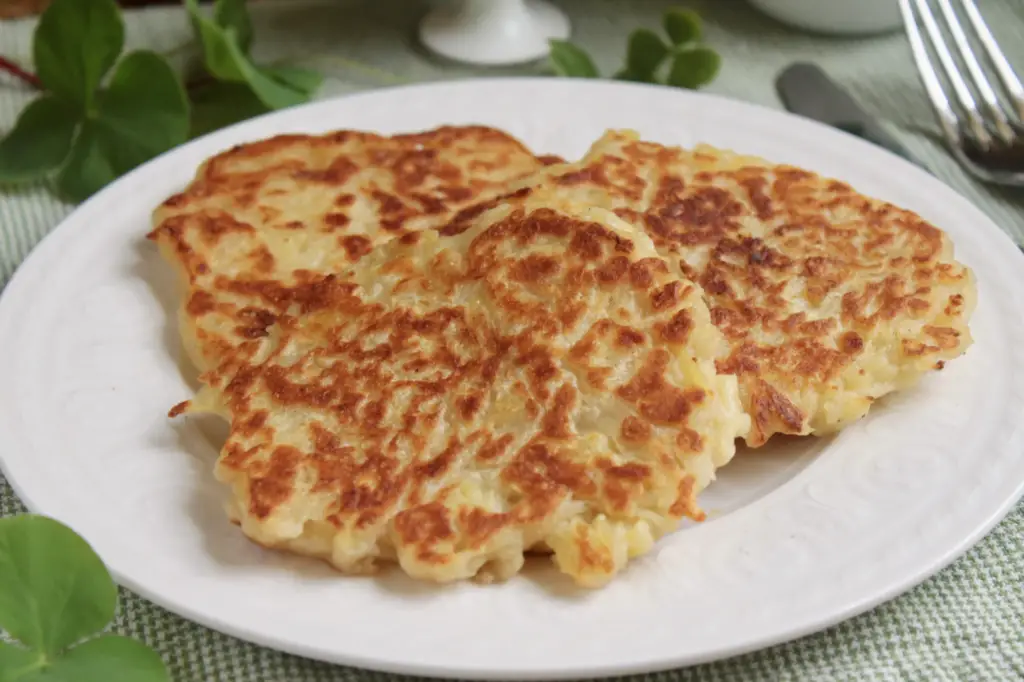
Boxty is a traditional Irish potato pancake. The name “boxty” originates from the Irish phrase “arán bocht tí,” which means “poor-house bread.” It’s a versatile dish that can be served in various ways, including boiled, baked, or pan-fried. Here’s a classic recipe for pan-fried Boxty:
Irish Cuisine – Boxty Ingredients:
- 500g raw potatoes
- 2 medium-sized cooked potatoes
- 1 cup (about 125g) all-purpose flour
- 1 teaspoon baking powder
- 1/2 teaspoon salt
- 1/4 to 1/2 cup (60ml to 120ml) buttermilk or milk
- Butter or oil for frying
Irish Cuisine – Boxty Preparation Instructions:
Preparing the Raw Potatoes
- Grate the raw potatoes into a bowl.
- Using a cloth or your hands, squeeze out as much liquid as possible from the grated potatoes.
- This will remove the starch, which will settle at the bottom of the bowl.
- Carefully pour off the liquid, retaining the white starch that has settled at the bottom.
Mashing the Cooked Potatoes
In a separate bowl, mash the cooked potatoes.
Combining Ingredients
- Combine the grated raw potatoes, mashed cooked potatoes, and the retained starch.
- Add the flour, baking powder, and salt to the potato mixture and mix well.
Adding Buttermilk
- Gradually add the buttermilk or milk, mixing until you have a batter that’s the consistency of thick pancake batter.
Frying the Boxty
- Heat a skillet or frying pan over medium heat and add a little butter or oil.
- Once hot, drop spoonfulls of the boxty batter into the pan, spreading them out into round pancakes.
- Fry the boxty pancakes for about 3-4 minutes on each side, or until they’re golden brown and cooked through.
Serving
- Serve the boxty pancakes hot.
- They can be enjoyed with a variety of toppings, such as butter, sour cream, smoked salmon, or any other favorite toppings.
Boxty is a delicious and hearty dish that showcases the simplicity and versatility of potatoes in Irish cuisine. Enjoy your homemade Irish Boxty!
Irish Cuisine – Colcannon
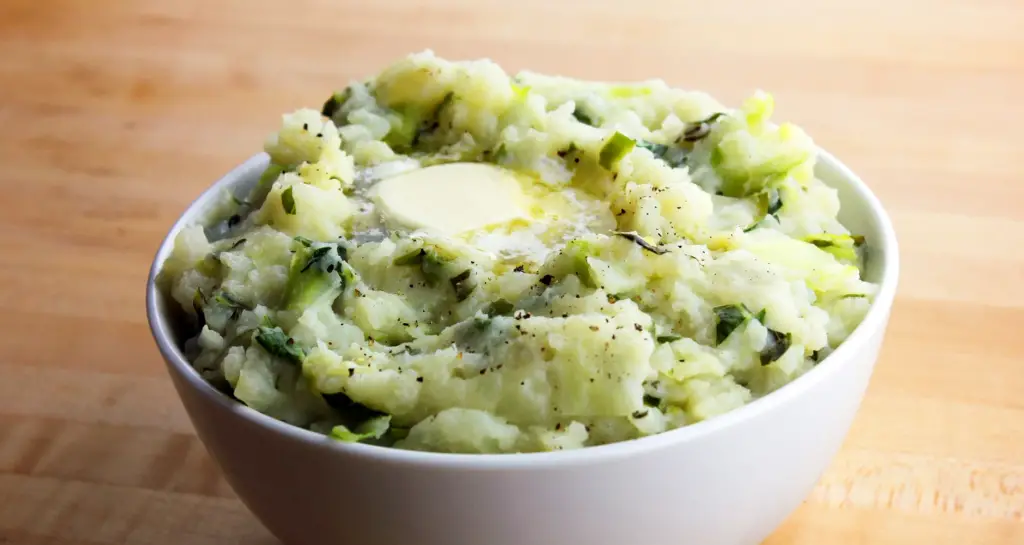
Colcannon is a classic Irish dish made from mashed potatoes mixed with cabbage or kale, butter, and seasonings. It’s a comforting side dish often associated with Halloween and St. Patrick’s Day in Ireland. Here’s a traditional recipe for Colcannon:
Irish Cuisine – Colcannon Ingredients:
- 1 kg (about 2.2 lbs) potatoes, peeled and quartered
- 4 cups chopped kale or green cabbage
- 1 cup milk or cream
- 1/2 cup unsalted butter, divided
- 4 green onions, finely sliced (including the green tops)
- Salt and pepper to taste
- Optional: 1 clove garlic, minced
Irish Cuisine – Colcannon Preparation Instructions:
Cooking the Potatoes
- Place the peeled and quartered potatoes in a large pot and cover them with cold water.
- Add a pinch of salt. Bring the water to a boil, then reduce the heat and simmer the potatoes until they are tender, about 15-20 minutes.
Preparing the Kale or Cabbage
- While the potatoes are cooking, melt 1/4 cup of butter in a large skillet over medium heat.
- Add the chopped kale or cabbage and cook until it’s wilted and has turned a darker green, about 5-7 minutes.
- If you’re using garlic, add it now and sauté for another 1-2 minutes.
Warming the Milk
In a small saucepan, gently heat the milk or cream without letting it boil.
Mashing the Potatoes
- Once the potatoes are cooked, drain them and return them to the pot.
- Mash the potatoes until they are smooth, adding the warmed milk or cream a little at a time until you achieve your desired consistency.
Combining Ingredients
- Stir in the cooked kale or cabbage and the sliced green onions.
- Mix well until everything is combined.
Seasoning
- Add the remaining 1/4 cup of butter, and season with salt and pepper to taste.
- Mix again until the butter is melted and the colcannon is creamy.
Serving
- Transfer the colcannon to a serving dish and make a well in the center.
- Place a small knob of butter in the well, allowing it to melt into the hot colcannon.
- Serve immediately.
Colcannon pairs wonderfully with roasted or grilled meats, especially sausages or corned beef. It’s a dish that embodies the warmth and heartiness of traditional Irish cuisine. Enjoy your homemade Irish Colcannon!
Irish Cuisine – Breakfast
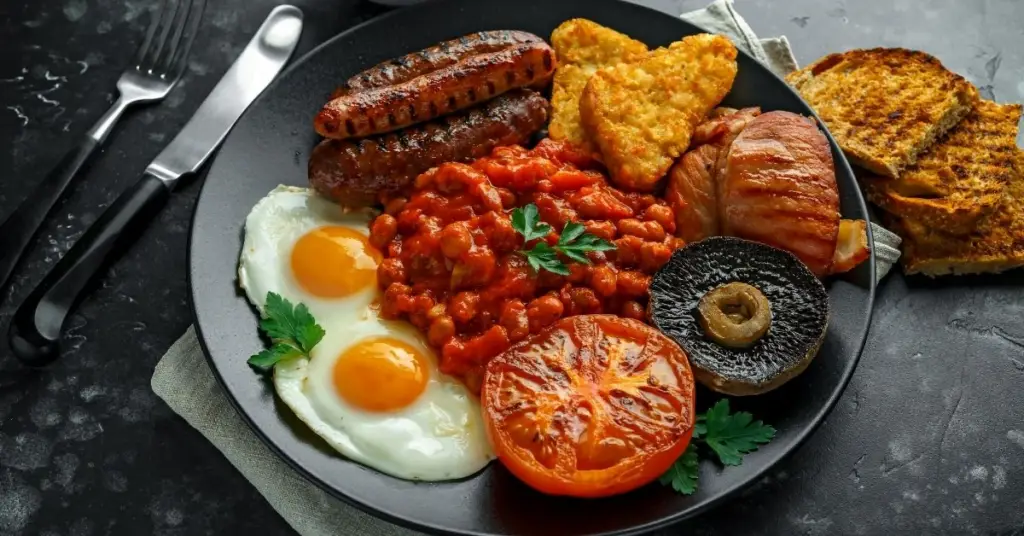
A hearty Irish breakfast is the perfect way to start your day. This breakfast typically includes sausages, bacon, black and white pudding, eggs, mushrooms, and grilled tomatoes, all served with a side of soda bread or toast.
It’s no wonder that this breakfast has become a popular dish in Ireland and around the world.
Here’s a recipe and preparation guide for a hearty Irish breakfast:
Irish Cuisine – Breakfast Ingredients:
- 4 Irish sausages (bangers)
- 4 rashers (Irish bacon slices, similar to Canadian bacon)
- 2 black puddings (blood sausages), sliced
- 2 white puddings (oatmeal sausages), sliced
- 2 large eggs
- 2 tomatoes, halved
- 4 large mushrooms, sliced or left whole
- 1 can of baked beans
- 2-4 slices of soda bread or brown bread
- Butter for frying and spreading
- Salt and pepper to taste
- Optional: 1-2 boiled or fried potatoes
Irish Cuisine – Breakfast Preparation Instructions:
Cooking the Meats
- In a large frying pan or skillet, melt some butter over medium heat.
- Add the sausages and rashers. Fry them until they’re golden brown and cooked through, turning occasionally.
- Once done, remove them from the pan and set them aside.
Puddings
- In the same pan, add the slices of black and white pudding.
- Fry them for a few minutes on each side until they’re crispy and heated through.
- Remove and set aside with the other meats.
Eggs
- Crack the eggs into the pan, seasoning with salt and pepper.
- Fry them to your liking, whether you prefer them sunny-side-up, over-easy, or well-done.
Tomatoes and Mushrooms
- Push the eggs to one side of the pan and add the tomato halves and mushrooms.
- Fry them until they’re softened and slightly caramelized.
Baked Beans
In a small saucepan, heat the baked beans over low heat, stirring occasionally until they’re hot.
Bread
- Toast the soda bread or brown bread slices.
- Spread some butter on them while they’re still warm.
Optional Potatoes
If you’re including potatoes, you can either boil them in salted water until tender or slice and fry them in the pan until they’re golden and crispy.
Serving
On large plates, arrange the sausages, rashers, black and white pudding slices, eggs, tomatoes, mushrooms, and a generous spoonful of baked beans. Serve the toasted bread on the side.
A traditional Irish breakfast is often accompanied by a pot of hot tea or coffee. It’s a filling and satisfying meal that’s especially popular on weekends or special occasions. Enjoy your hearty Irish breakfast!
Irish Cuisine – Shepherd’s Pie
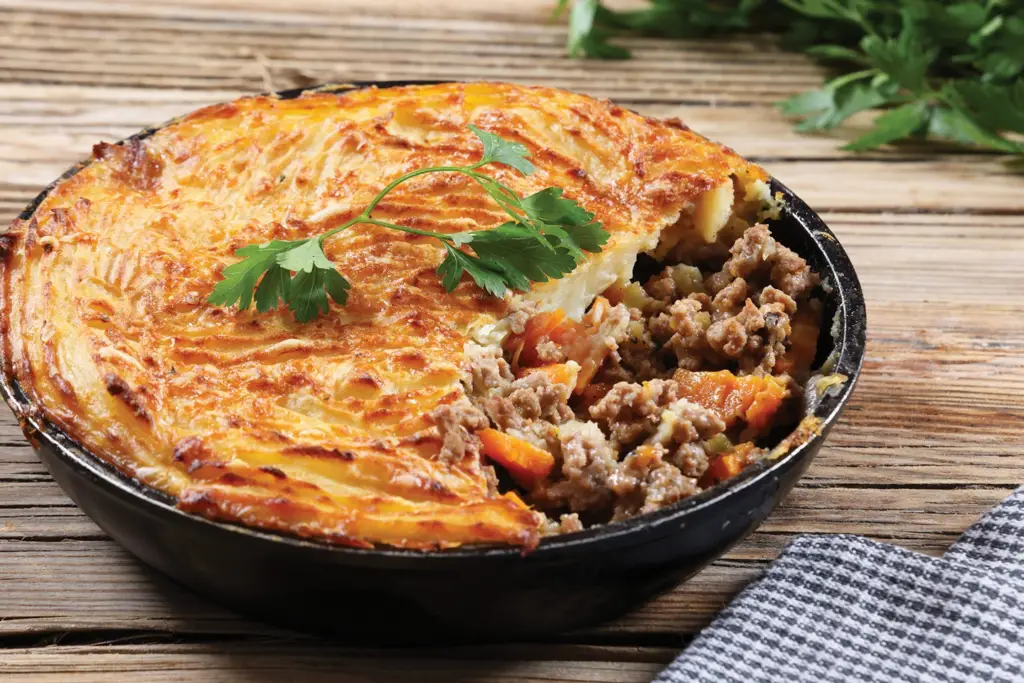
History of Shepherd’s pie
Shepherd’s Pie, also known as cottage pie when made with beef, is a quintessential dish of Irish cuisine with a history that is both humble and hearty. Its origins can be traced back to the United Kingdom and Ireland in the late 1700s to early 1800s.
The dish was conceptualized as a means of utilizing leftover roasted meat of any kind, and the name “cottage pie” reflected the modest homes, or cottages, of the rural poor who were its main consumers.
The term “shepherd’s pie” began to be used when the dish was made specifically with lamb or mutton, drawing an association with shepherds, who were responsible for herding sheep.
The Potatoe Revolutionised Recipes
The introduction of the potato to Europe was pivotal for the creation of this dish. Potatoes were widely adopted in Ireland due to their ability to grow in poor soil conditions and their nutritional value. After the devastating Great Famine in the mid-19th century, the Irish were left with a deep reliance on the potato, and it became a staple of their diet. Shepherd’s Pie, with its crust of mashed potatoes, was a practical and economical way to stretch out the household’s food.
The dish is traditionally made by lining a pie dish with cooked, minced meat that is often mixed with diced vegetables and gravy. It is then topped with a layer of mashed potatoes. The pie is baked until the mashed potatoes are well browned on top, creating a dish that is filling, comforting, and rich with flavor.
Shepherd’s Pie is more than just a meal; it is a symbol of Irish ingenuity and comfort. It represents a history of survival and adaptation, making the most of available resources, and turning simple ingredients into a dish that has stood the test of time and continues to be beloved in Ireland and beyond.
Here’s a classic recipe for Shepherd’s Pie:
Irish Cuisine – Shepherd’s Pie Ingredients:
For the Filling:
- 500g (about 1 lb) ground lamb (or beef, if you prefer)
- 1 large onion, finely chopped
- 2-3 carrots, diced
- 2 cloves garlic, minced
- 1 cup frozen peas
- 2 tablespoons tomato paste
- 1 cup beef or chicken broth
- 1 teaspoon Worcestershire sauce
- 1 teaspoon fresh or dried rosemary
- 1 teaspoon fresh or dried thyme
- 2 tablespoons vegetable oil or butter
- Salt and pepper to taste
For the Mashed Potato Topping:
- 1 kg (about 2.2 lbs) potatoes, peeled and quartered
- 1/2 cup milk or cream
- 1/4 cup unsalted butter
- Salt and pepper to taste
- Optional: grated cheese (like cheddar) for topping
Irish Cuisine – Shepherd’s Pie Preparation Instructions:
Preparing the Potatoes
- Place the peeled and quartered potatoes in a large pot and cover them with cold water.
- Add a pinch of salt.
- Bring the water to a boil, then reduce the heat and simmer until the potatoes are tender.
- Drain the potatoes and mash them with the milk, butter, salt, and pepper until smooth.
- Set aside.
Cooking the Filling
- In a large skillet or frying pan, heat the vegetable oil or butter over medium heat.
- Add the chopped onion and carrots and sauté until the onions are translucent.
- Add the minced garlic and cook for another minute.
Adding the Meat
- Increase the heat to medium-high and add the ground lamb or beef to the skillet.
- Cook until browned, breaking it up with a spoon as it cooks.
Seasoning and Broth
- Stir in the tomato paste, broth, Worcestershire sauce, rosemary, thyme, salt, and pepper.
- Bring the mixture to a simmer, then reduce the heat and let it cook for about 10 minutes, or until the sauce has thickened slightly.
- Add the frozen peas and cook for another 2-3 minutes.
Assembling the Pie
- Preheat your oven to 200°C (400°F).
- Transfer the meat filling to a large baking dish.
- Spread the mashed potatoes over the top, smoothing them out with a spatula.
- If you’re using cheese, sprinkle it over the mashed potatoes.
Baking
Place the baking dish in the preheated oven and bake for about 20-25 minutes, or until the mashed potatoes are golden brown and the filling is bubbling.
Serving
Remove the Shepherd’s Pie from the oven and let it cool for a few minutes before serving.
Shepherd’s Pie is best enjoyed hot, with a side of green vegetables or a simple salad. It’s a warming and filling dish that’s perfect for cold days or when you need some comfort food.
Enjoy your homemade Irish Shepherd’s Pie!
Irish Cuisine – Barmbrack
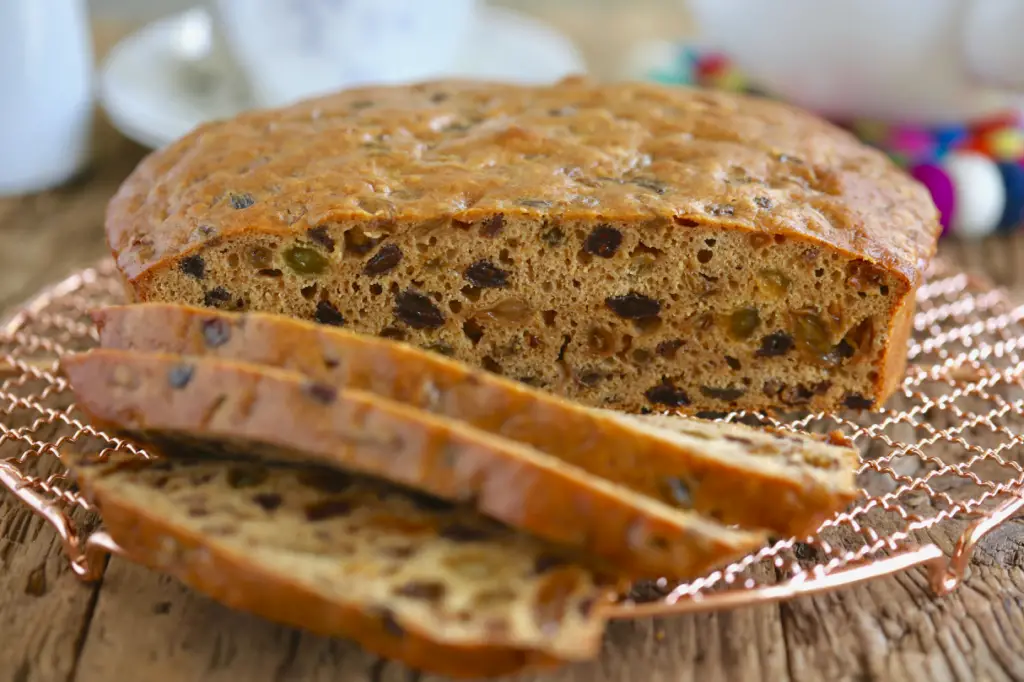
Barmbrack is a traditional Irish fruit bread that is typically enjoyed around Halloween. This sweet and spicy bread is made with dried fruit, sugar, and spices, and can be served with butter or jam for an extra special treat.
When found by a person, is said to foretell marriage within the year. Here’s a recipe for Barmbrack:
Irish Cuisine – Barmbrack Ingredients:
- 450g (about 1 lb) mixed dried fruit (raisins, sultanas, currants, candied peel)
- 300ml (about 1 1/4 cups) strong black tea
- 450g (about 3 1/2 cups) all-purpose flour
- 2 teaspoons baking powder
- 1/4 teaspoon ground cinnamon
- 1/4 teaspoon ground nutmeg
- 1/4 teaspoon ground allspice
- 150g (about 3/4 cup) granulated sugar
- 1 large egg, beaten
- 1 ring (optional, for tradition)
- Butter, for greasing
Irish Cuisine – Barmbrack Preparation Instructions:
Soaking the Fruit
- In a large mixing bowl, combine the mixed dried fruit and black tea.
- Cover the bowl and let the fruit soak overnight.
- This will plump up the fruit and infuse it with the tea flavor.
Preheat the Oven
- The next day, preheat your oven to 180°C (350°F).
- Grease a round cake tin or loaf pan with butter.
Dry Ingredients
- In a separate large mixing bowl, sift together the flour, baking powder, cinnamon, nutmeg, and allspice.
- Add the sugar and mix well.
Combining Wet and Dry
- Make a well in the center of the dry ingredients.
- Add the beaten egg and the soaked fruit (along with any remaining tea).
- Mix everything together until you have a thick batter.
Adding the Ring
- If you’re including a ring for tradition, wrap it in a piece of parchment paper or foil and stir it into the batter.
Baking
- Pour the batter into the prepared cake tin or loaf pan.
- Smooth the top with a spatula.
- Place the tin or pan in the preheated oven and bake for about 1 hour, or until a skewer inserted into the center comes out clean.
Cooling
- Once baked, remove the Barmbrack from the oven and let it cool in the tin or pan for about 10 minutes.
- Then, transfer it to a wire rack to cool completely.
Barmbrack is best enjoyed sliced and spread with a little butter. It’s a delicious treat that’s perfect with a cup of tea. If you included a ring, be sure to let everyone know so they can look out for it as they enjoy their slice!
Enjoy your homemade Irish Barmbrack!
So, whether it’s a hearty Irish breakfast or a comforting shepherd’s pie, there are plenty of popular dishes to explore in the world of Irish cuisine. These dishes offer a tantalizing taste of tradition and are sure to please even the most discerning palate.
Conclusion
As you finish your last sip of creamy Guinness or savor the final crumb of a buttery scone, remember that Irish cuisine is more than just food. It’s a story told through generations, a tapestry woven from hardship and resilience, and a warm embrace of the land’s bounty. From the humble potato to the vibrant seafood stews, each bite whispers tales of ancient traditions, cultural influences, and a deep-rooted love for sharing good food with good company.
So, next time you raise a toast or gather around a steaming plate of Irish fare, remember the heart and soul poured into every dish. Sláinte, and may your journey through Irish cuisine continue, filled with the warmth of laughter, the comfort of tradition, and the delicious memory of an island’s unique culinary spirit.
FAQ’s
What is the national dish of Ireland?
The national dish of Ireland is the legendary Irish stew, a hearty and comforting dish made with tender meat, root vegetables, and aromatic herbs.
What are some traditional Irish recipes?
Traditional Irish recipes include soda bread, colcannon, boxty, and seafood chowder, among many others. These dishes showcase the unique flavors of Ireland and have been passed down through generations.
What are some popular dishes in Ireland?
In addition to the national dish, popular dishes in Ireland include Irish breakfast, shepherd’s pie, and Barmbrack. These culinary delights represent the diverse flavors and traditions of Irish cuisine.
What makes Irish cuisine unique?
Irish cuisine is unique due to its deep connection to the land and the bounty it provides. The use of fresh, locally sourced ingredients and a focus on hearty and wholesome flavors are key elements that distinguish Irish cooking.
Can I try cooking traditional Irish dishes at home?
Absolutely! We encourage you to embark on your own Irish cooking adventure and bring the tastes of Ireland into your own kitchen. Our section on traditional Irish recipes will guide you step-by-step in preparing authentic dishes that will transport you to the Emerald Isle.
How can I explore more Irish culinary delights?
While we have touched upon the national dish and popular recipes, there is so much more to discover in the world of Irish cuisine. Visit our section on exploring Irish culinary delights to learn about other traditional dishes and their unique ingredients and techniques.
What is the significance of Irish cuisine?
Irish cuisine is not just about food; it is a celebration of heritage and traditions. It brings people together, evoking a sense of warmth and hospitality. Exploring Irish cuisine allows you to connect with the rich culinary heritage of Ireland and savor the flavors that have captivated generations.

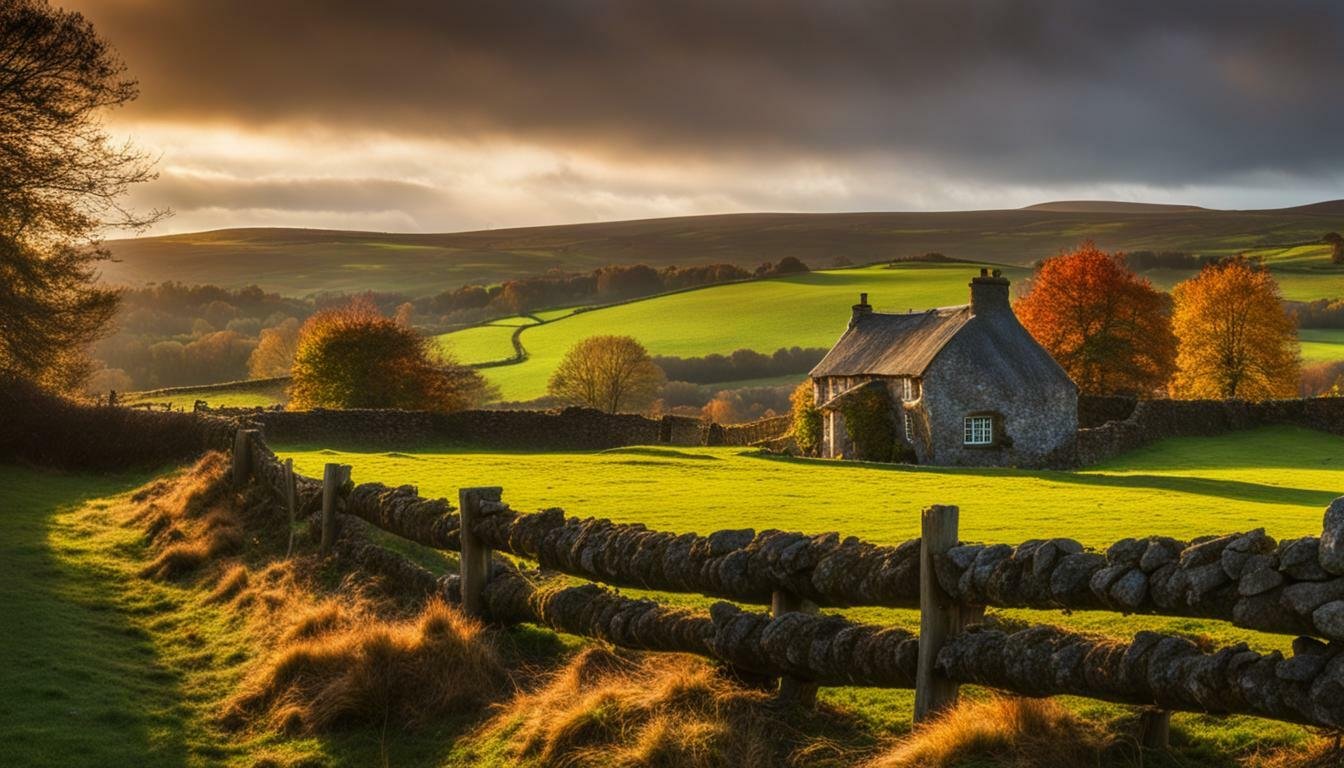
Great article